Our Coffee Nook and cabinetry wall made with these IKEA Havsta Cabinets is finally complete, and our countertops are finally cleaned off! These cabinets are just off our kitchen – in the dining nook area. I can’t even describe how good it feels to have a place to hide all the random odds and ends.
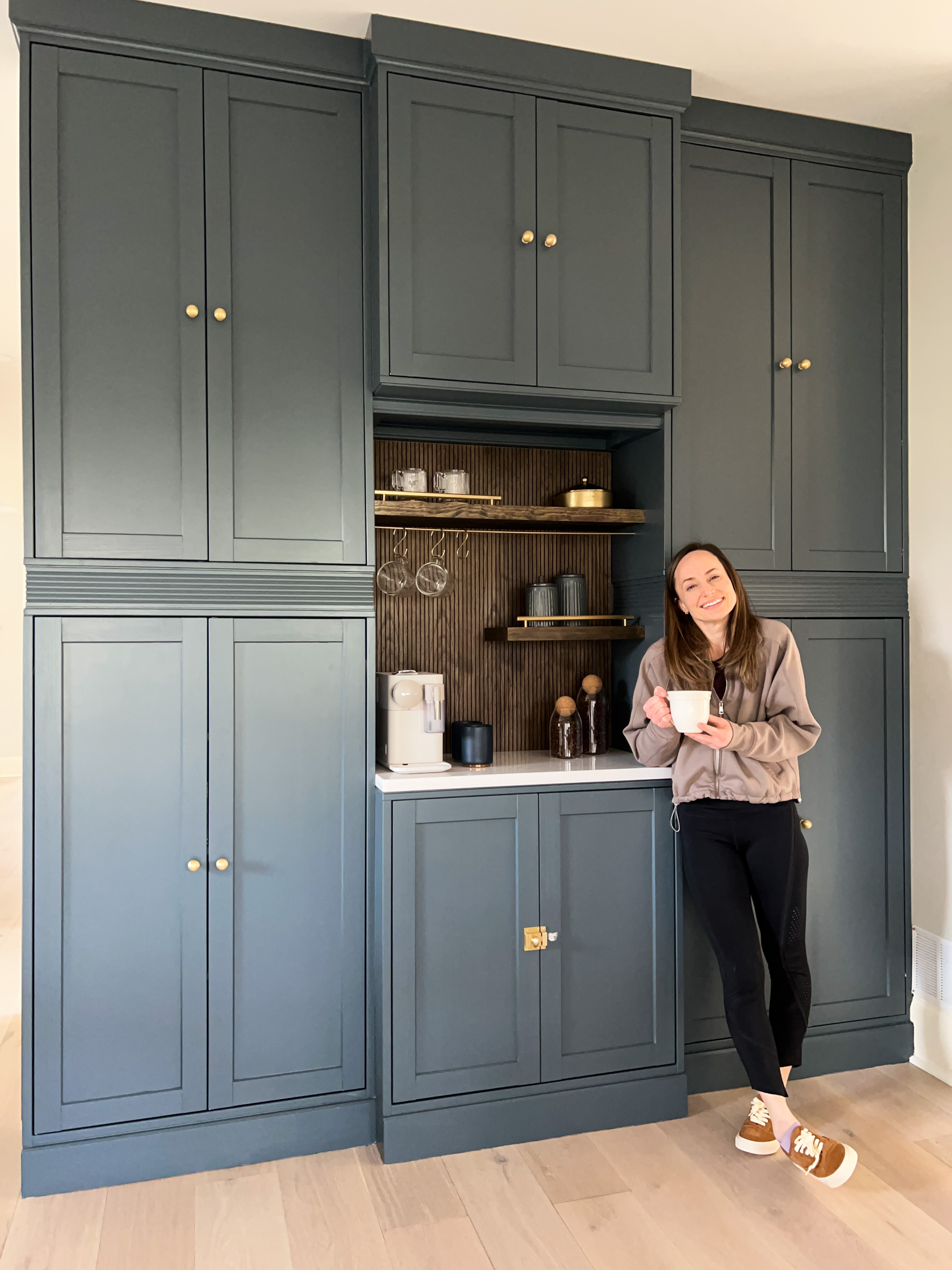
Coffee Nook with Ikea Havsta Cabinet Video
Below is the step-by-step process with all links and cost breakdowns, and you can watch the video I made of the process as well!
Before the Coffee Nook
The below photos show what this space looked like before we moved in. The previous owners had a huge bulletin board on this wall, most likely used as a “command center” for the family. The goal with these built-ins is achieving something similar, just with more storage and functionality.
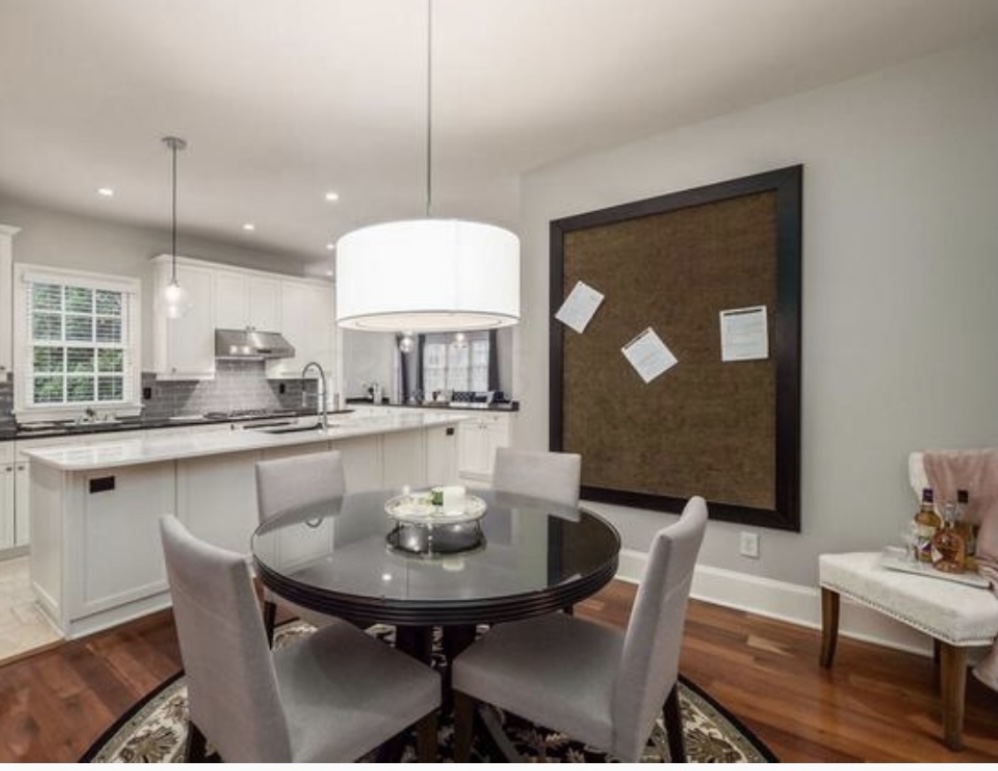
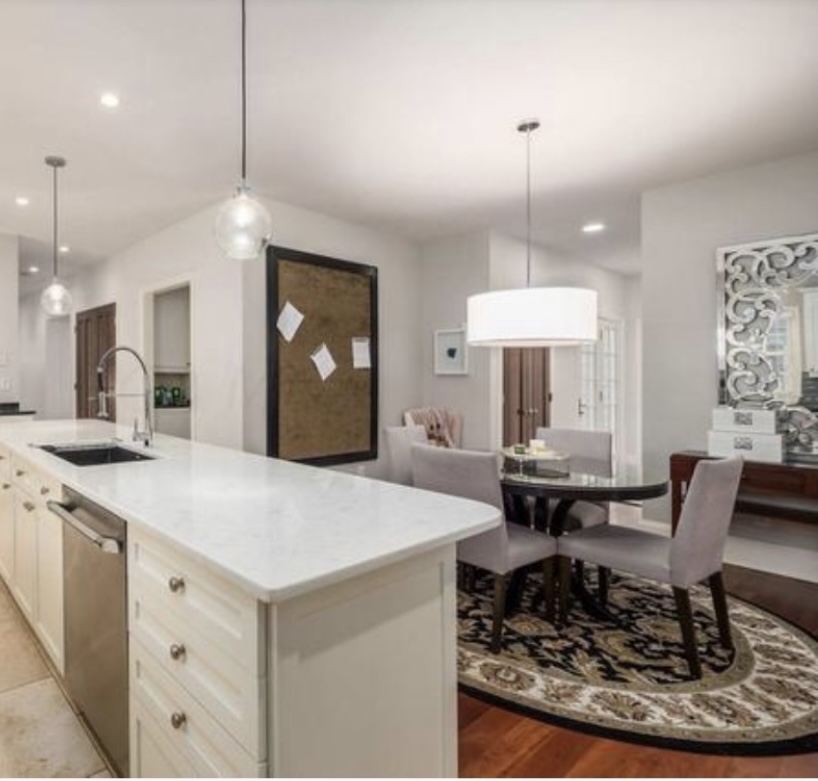
Moving our dining table over and swagging the light gave us the room we needed for the cabinets.
Goals for the Coffee Nook
As random as this sounds, one of the main things we want out of this wall is storage for our vacuums when they’re being charged! That’s honestly why we went with the HAVSTA cabinets from IKEA. They are 48″ high, which is a lot taller than a standard cabinet height.
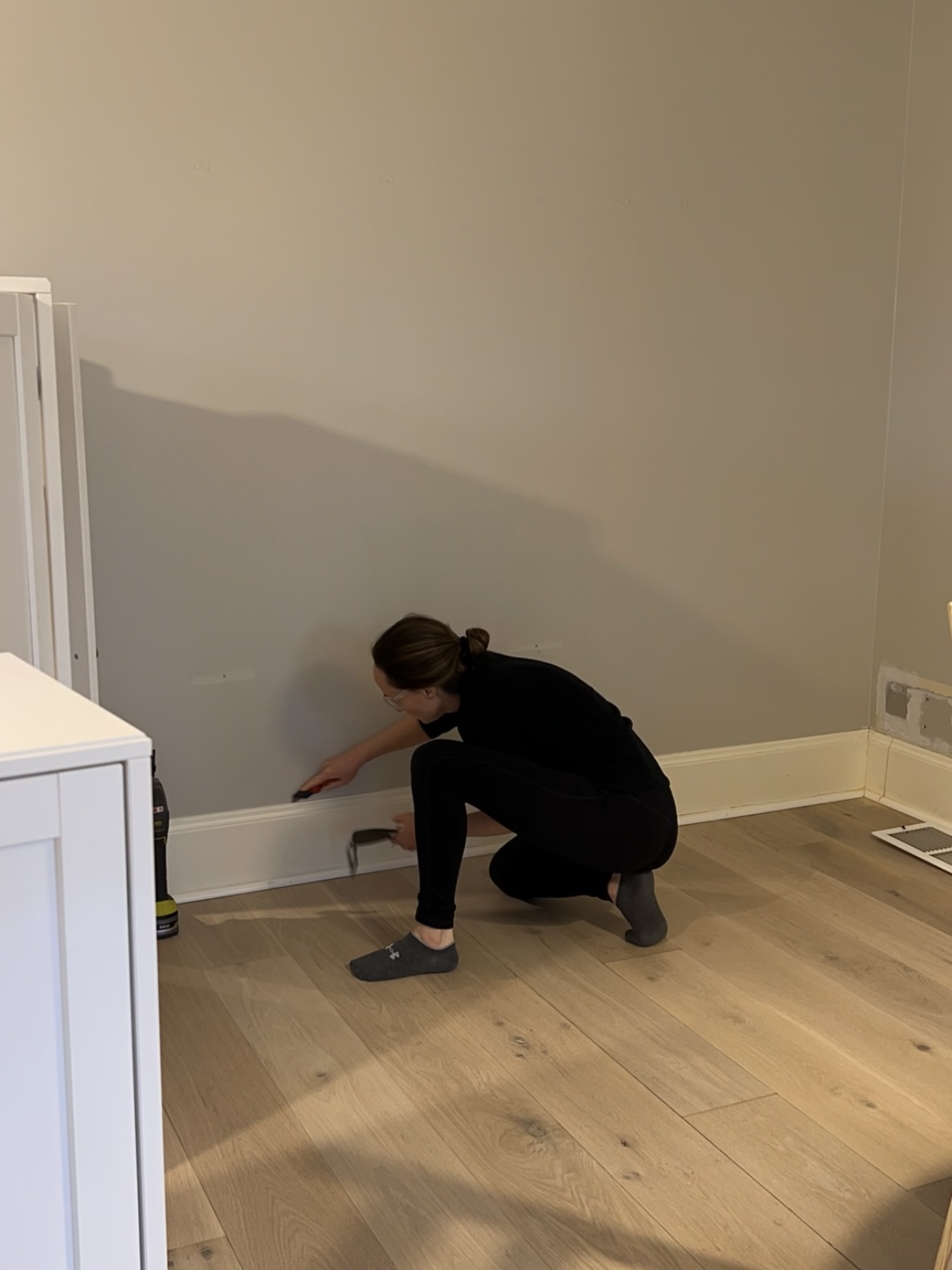
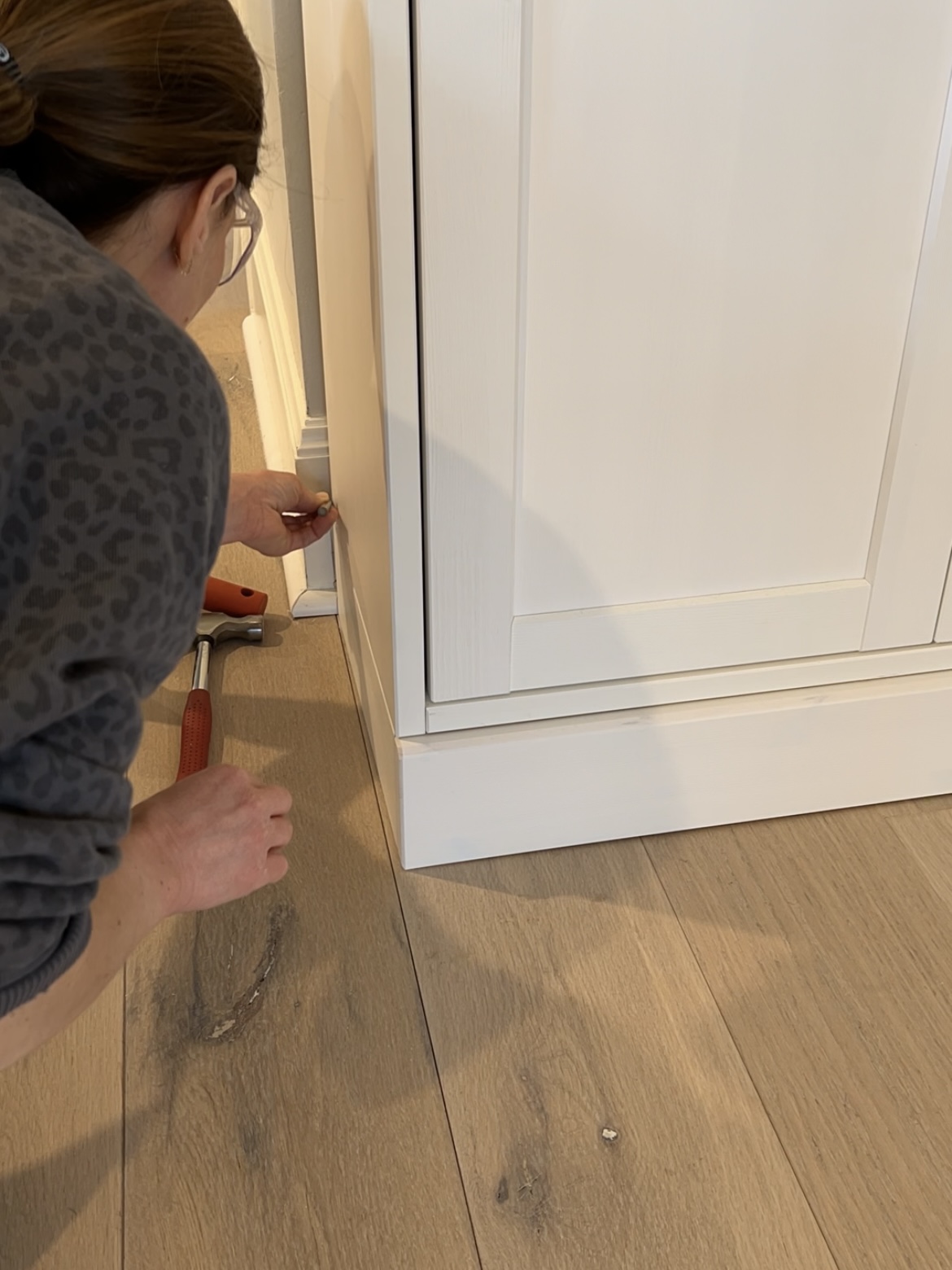
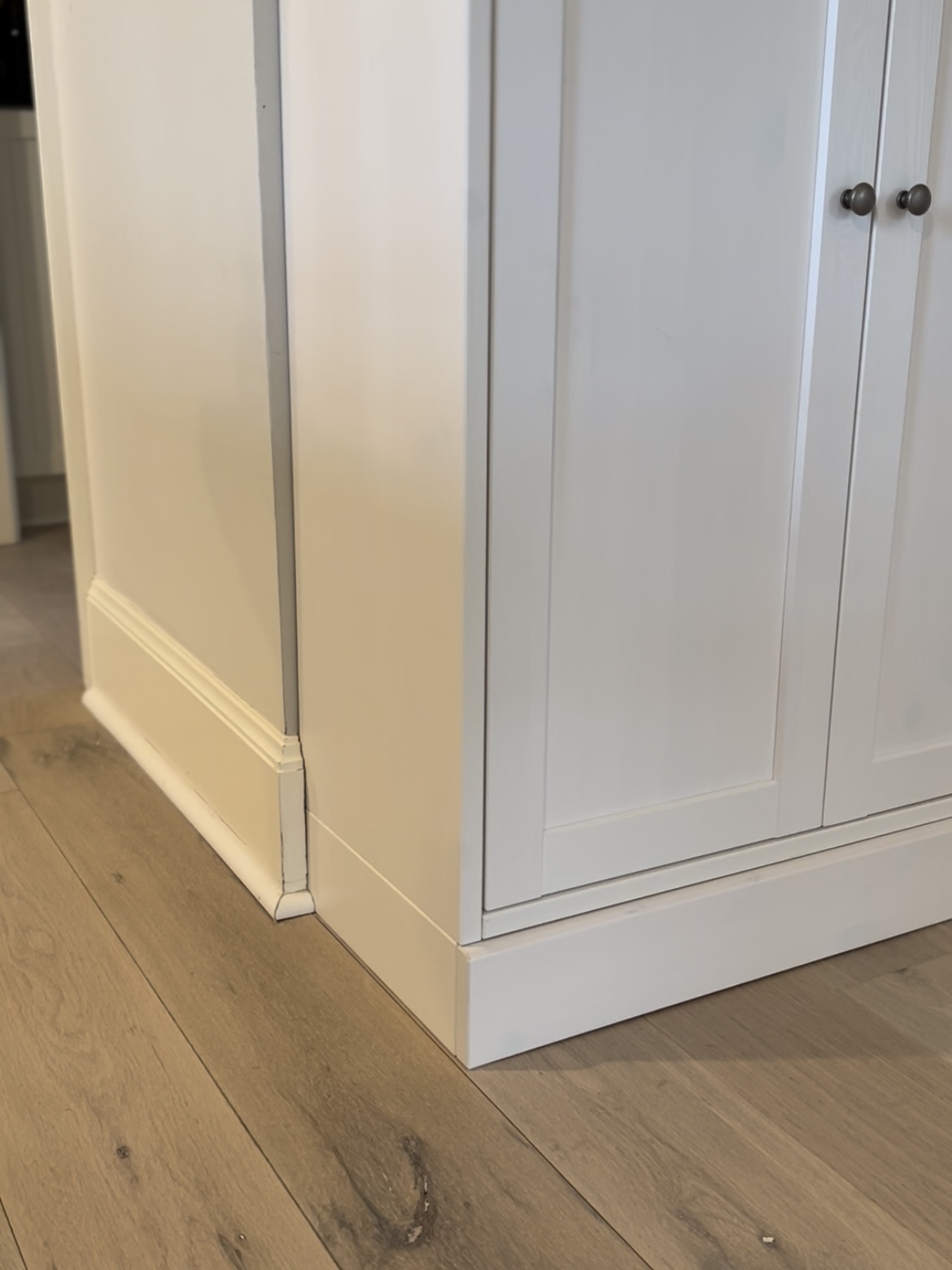
Building out the Ikea Havsta Cabinets
The tall IKEA HAVSTA cabinets are the four cabinets flanking the sides. The shorter and deeper IKEA HAVSTA cabinets are the two cabinets in the middle.
The three cabinets along the bottom all use the IKEA bases that come with the cabinet. If we had an additional inch in our ceiling height, we could have also used those same bases for the top/crown.
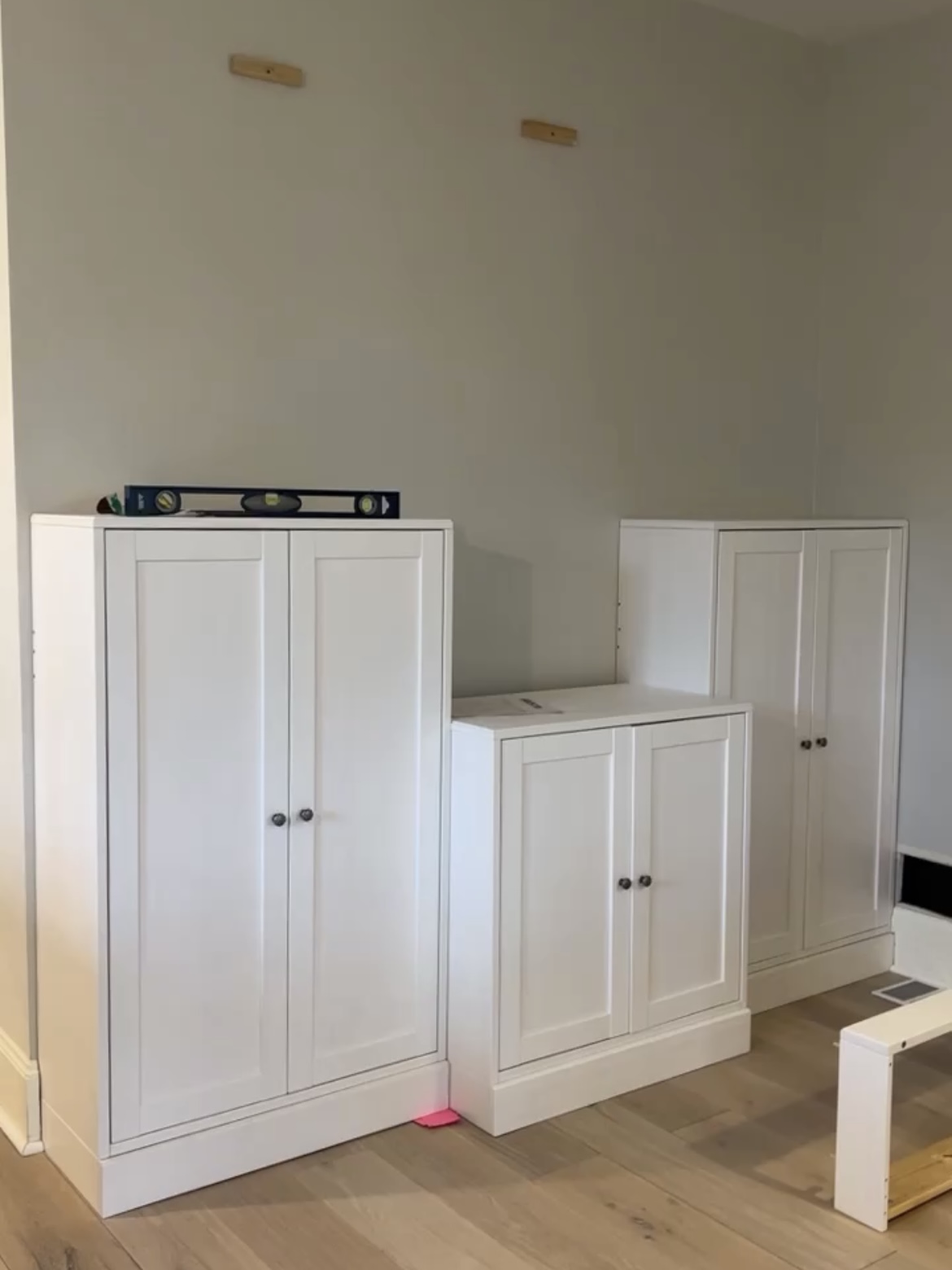
Anchoring the IKEA Cabinets to the Wall
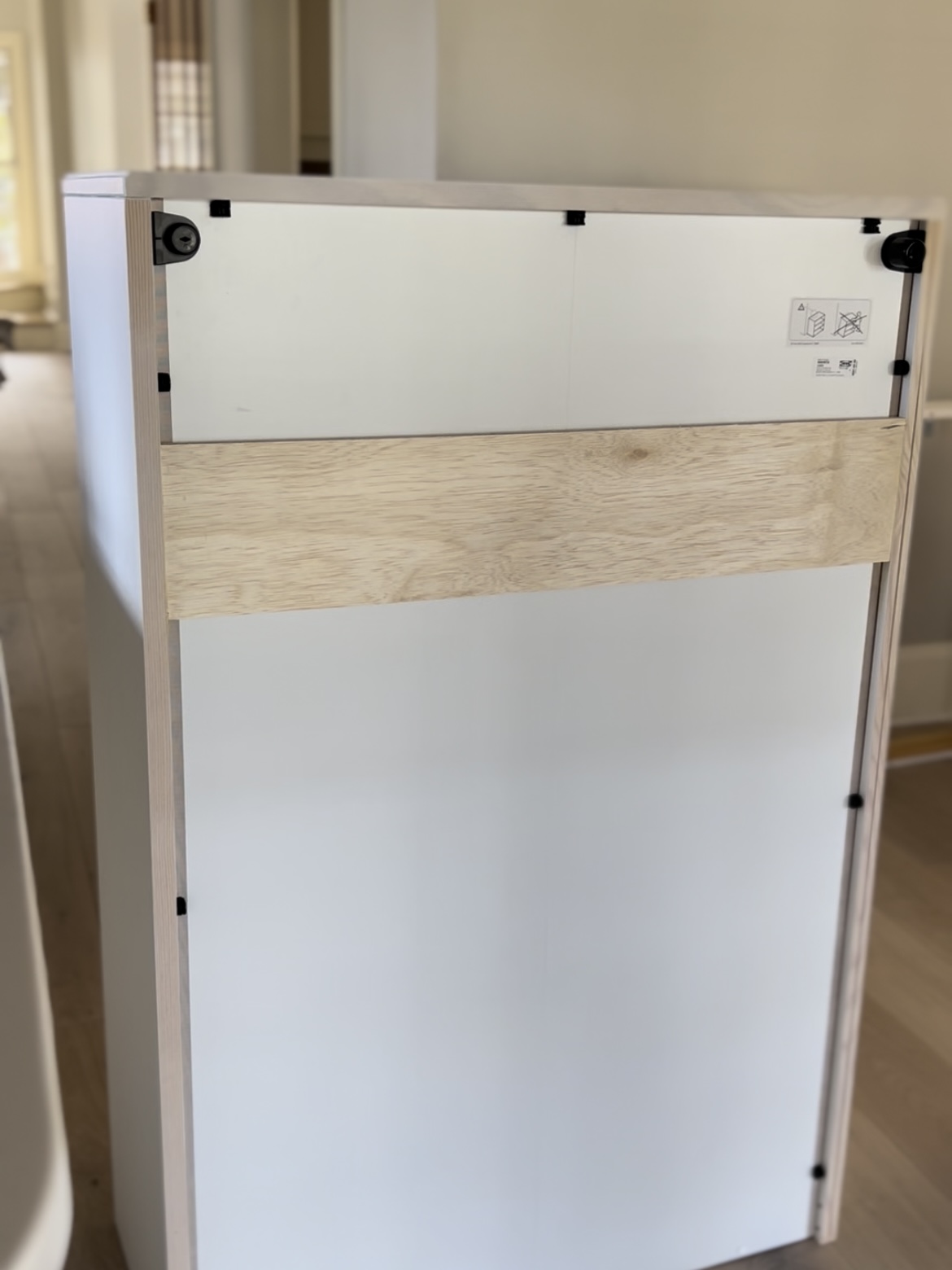
I wanted to anchor the top cabinets to the wall, and the backing of these cabinets is pretty thin, so I couldn’t count on screwing through the back for support.
Adding a strip of 1/2″ plywood across the back helped with this, using wood glue, nails, then screws to attach it. I even used L-brackets on the inside corners where the plywood was. When I installed everything, screws went through the backing and plywood into wall studs.
Supporting the Top Cabinets
My biggest concern was securing these cabinets safely to the wall! That’s the main reason I added the decorative trim in the middle of the tall cabinets. It hides the 2×4’s that are attached to studs for that added support.


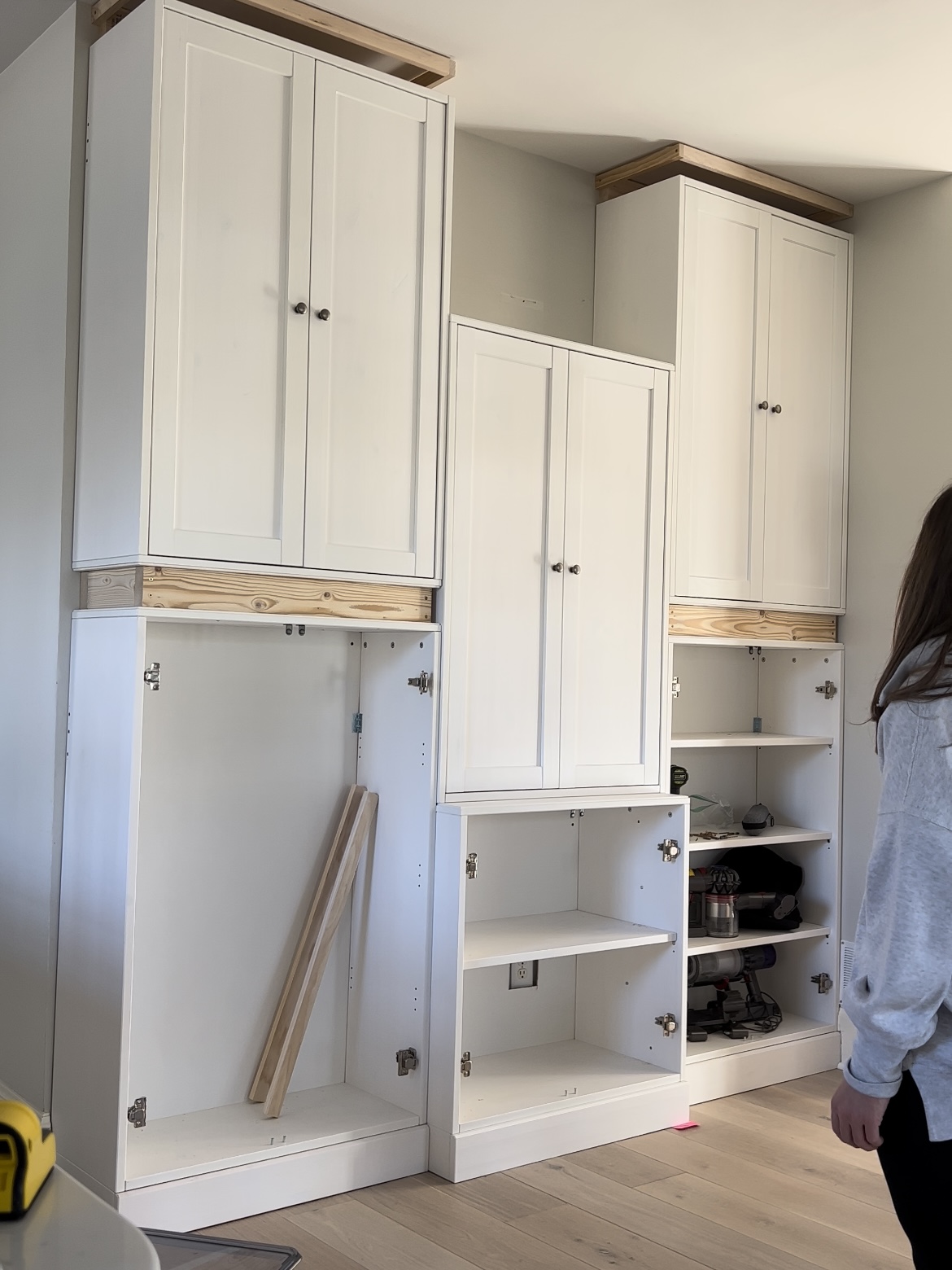
The 2×4 box in the middle of the wall was slightly inset from the cabinet dimensions, to account for the thickness of the fluted decorative trim. I wanted the fluted trim to be flush with the cabinets.
The 2×4 box at the top, however, matched the dimensions of the cabinets. These essentially expanded the cabinets to the ceiling, giving me something to nail the crown into.
All 2×4 boxes were screwed into studs and support the cabinets.
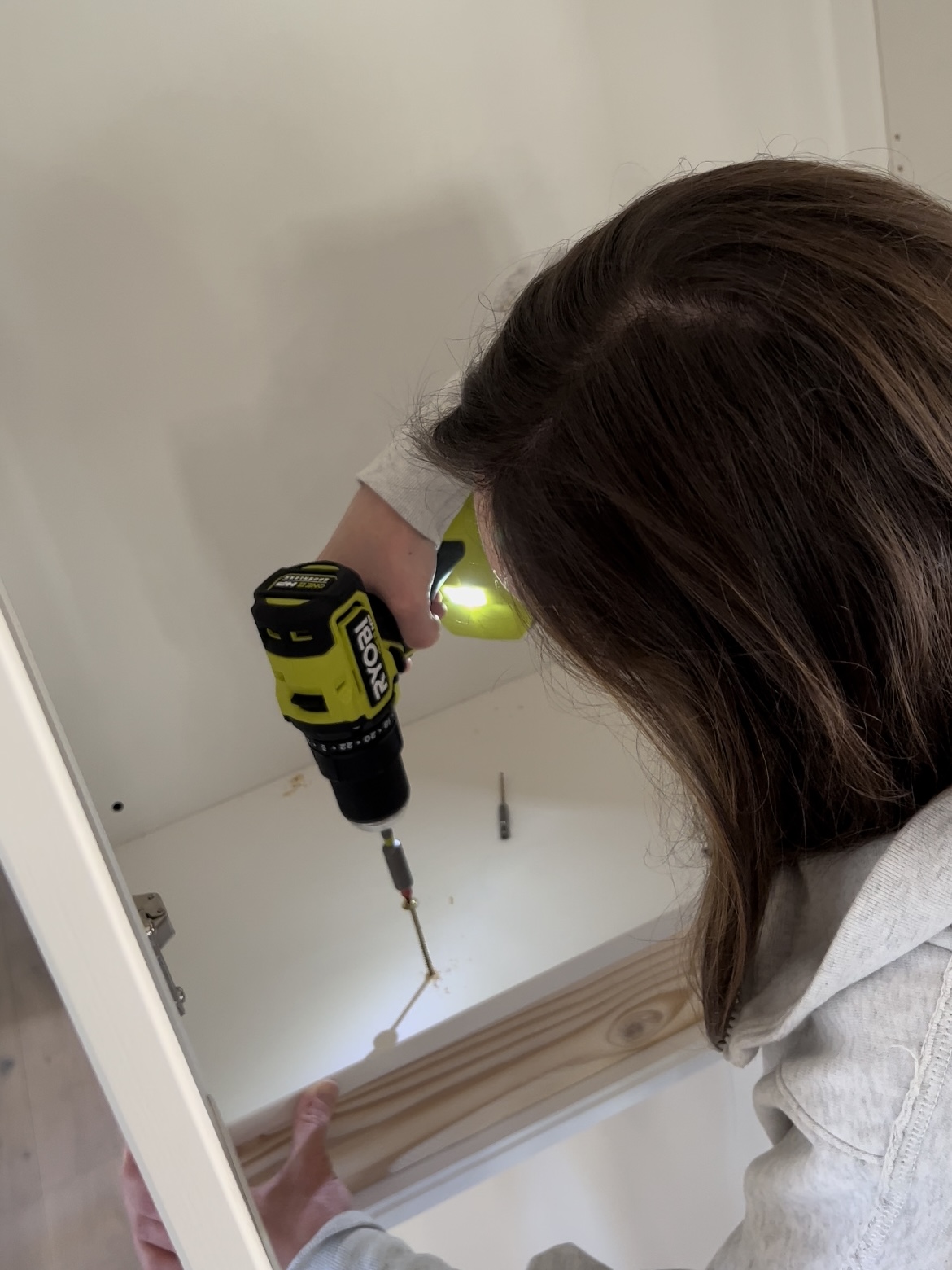
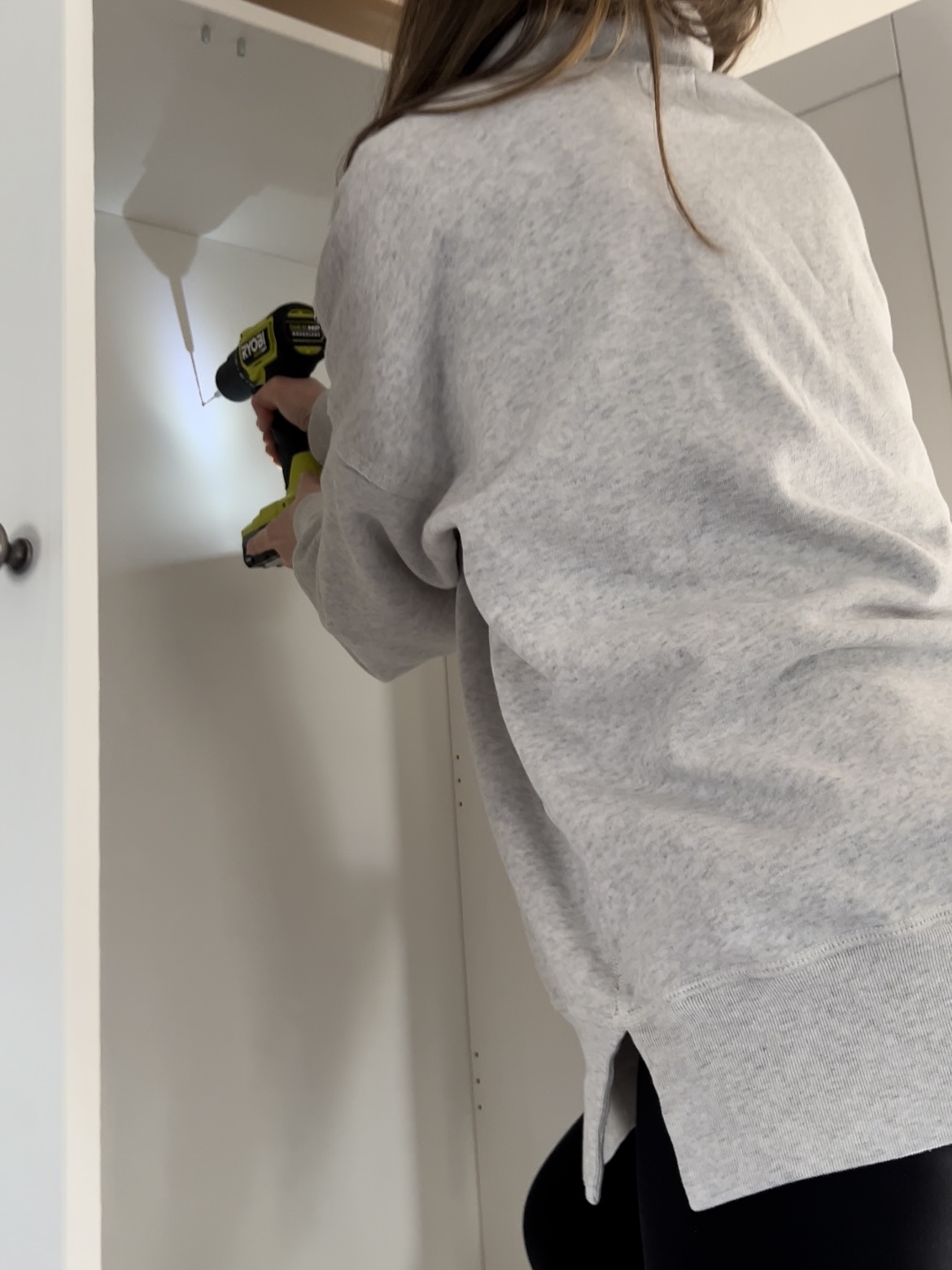
Installing the IKEA Havsta Cabinets
Once the 2×4 boxes were secured into the wall, I screwed the cabinets into the boxes as well. Each cabinet has multiple screws through the base and top into those 2×4 boxes.
The ones on the right are screwed into the side stud, and don’t forget about the strip of plywood across the back… it was also screwed into studs through the cabinet back!
The cabinets have multiple screws attaching them to each other as well.
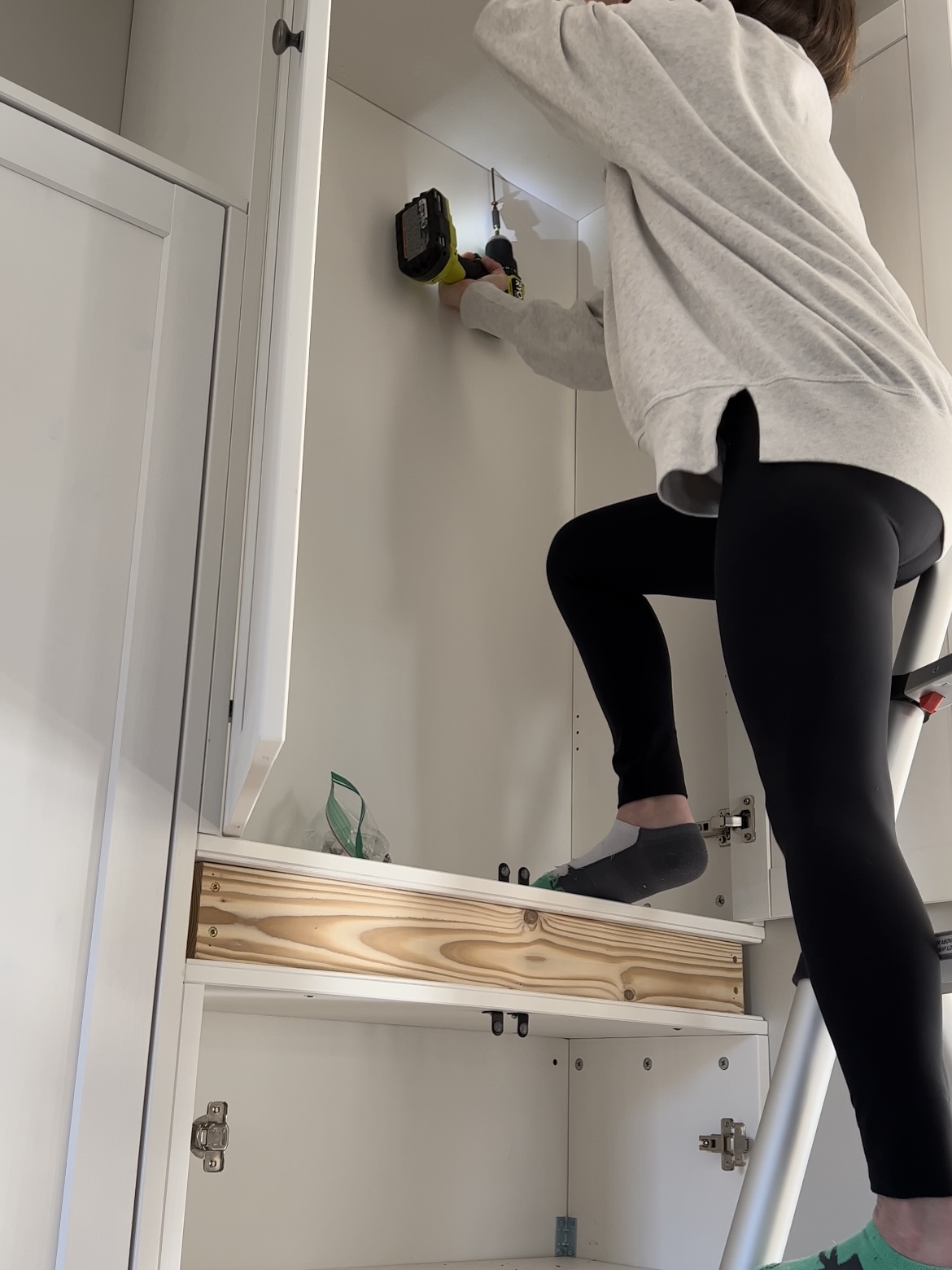
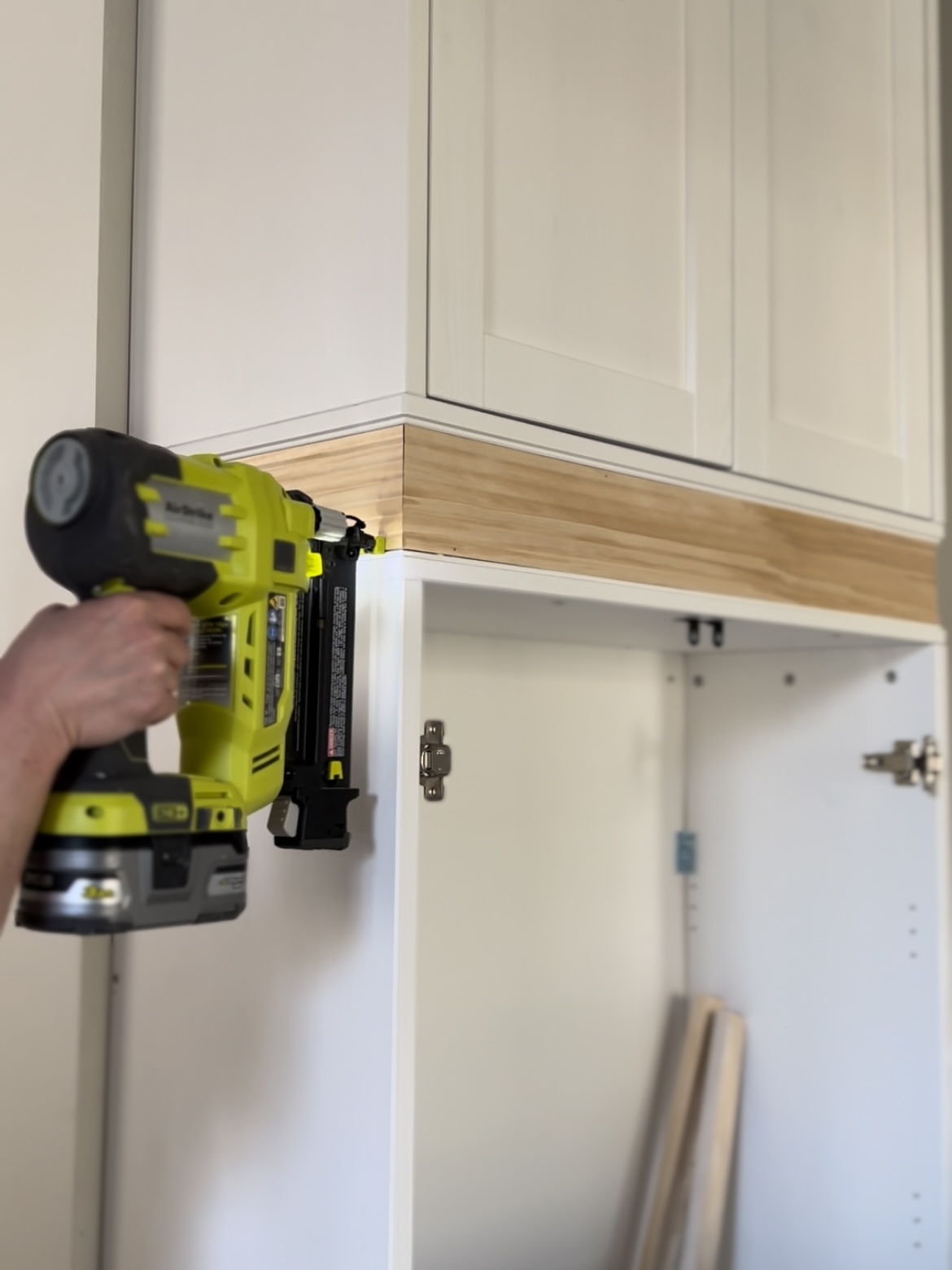
Favorite Screws
I always use star-head screws to avoid stripping, and I mainly used 2 1/2″ long screws for this project. Screws offer more grip/security than nails, so I only use nails when adding trim that doesn’t have a ton of weight.
Cabinet Layout/Assembly
One of the most important things to note…. The top cabinets are UPSIDE DOWN. These cabinet boxes are almost identical all the way around, but the top of the IKEA Havsta have a slight lip, and the bottom is perfectly square. I flipped the top cabinets, so the lip of both cabinets would meet in the middle – where I added the decorative trim.
This turned the lip into part of the design and made it blend so nicely.
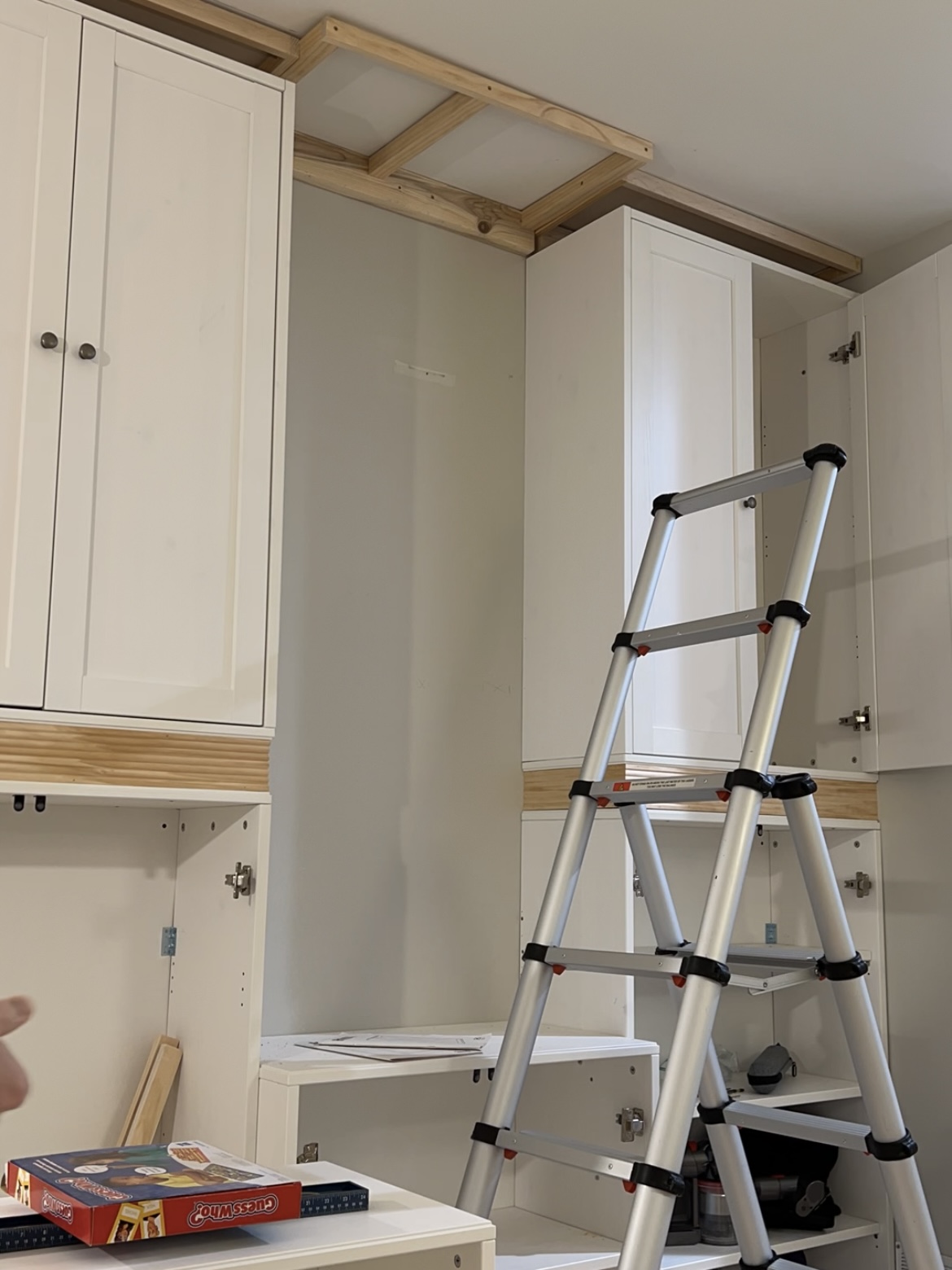

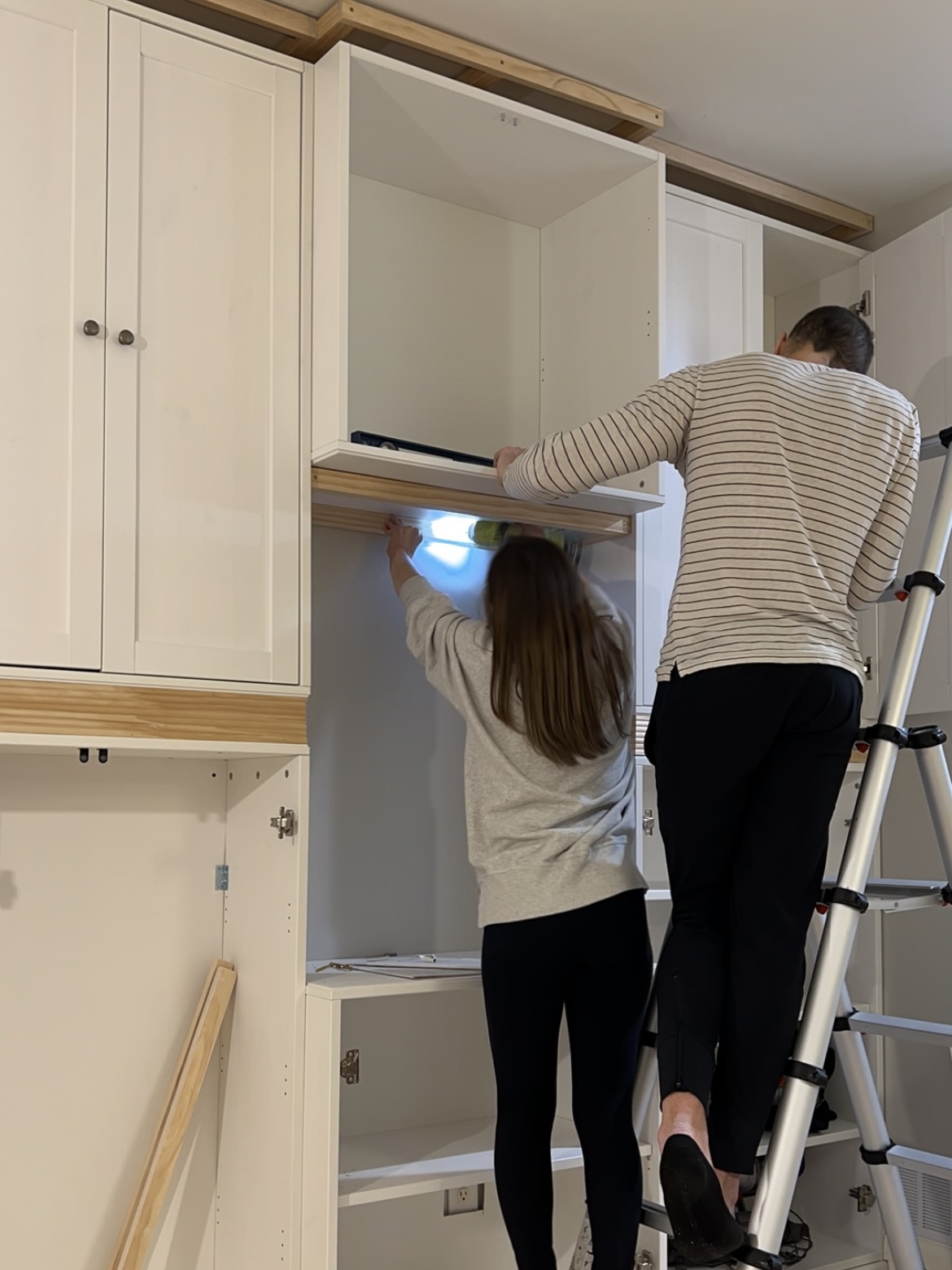
The Coffee Nook
We used the two shorter cabinets in the middle bottom and top. This gave us room in the center for a little coffee bar. I added a 2×2 box underneath the top cabinet for added support. When installing the side cabinets, we made sure everything was perfectly lined up to give the middle cabinets a super snug fit!
Trimming It Out
In addition to the fluted trim wrapping around the middle of the cabinets, I also had to decide how to finish off the top and the exposed side on the left.
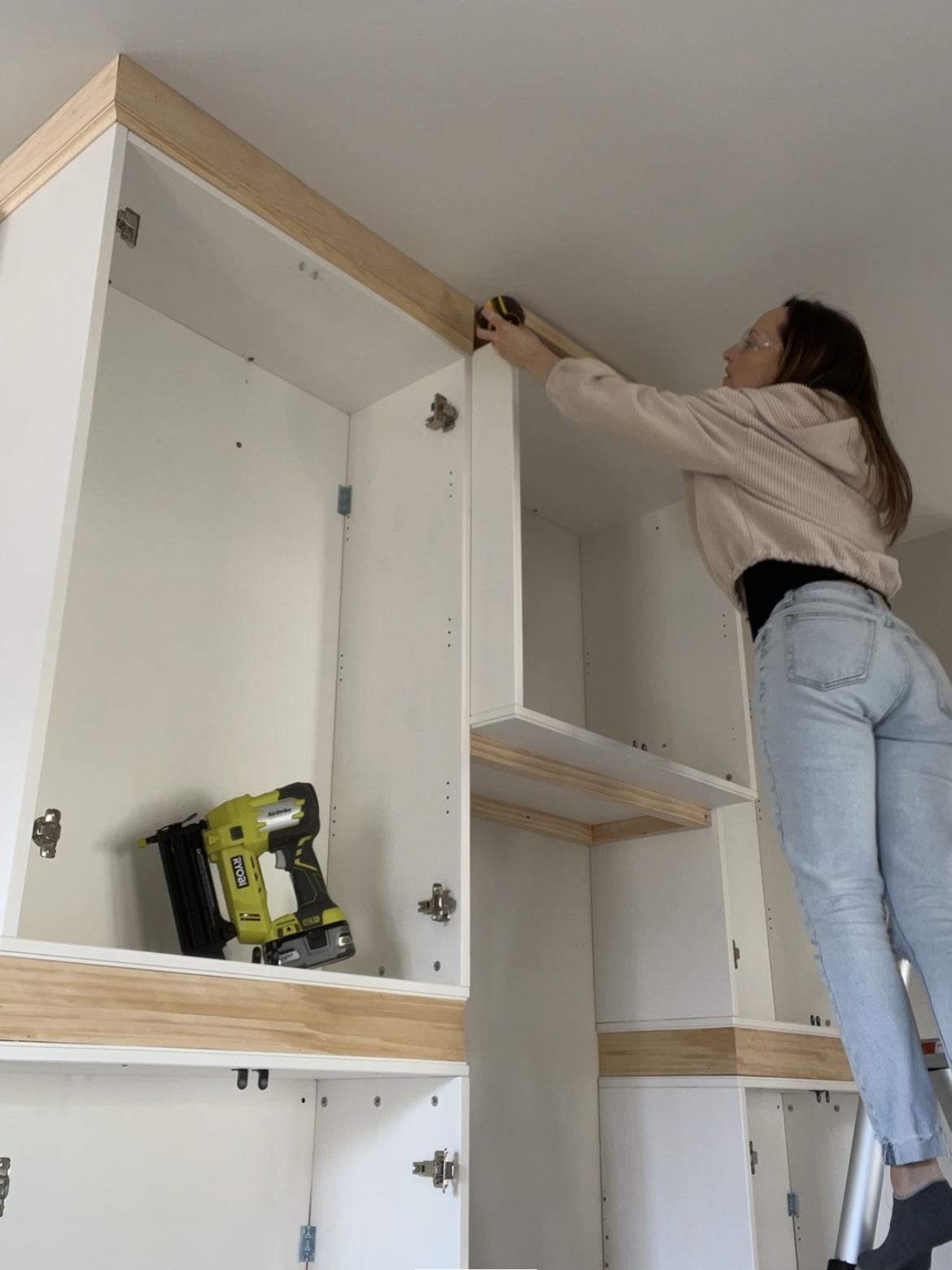

Crown Moulding
With the cabinets flipped upside down, I could have used the included IKEA Havsta bases (from the top three cabinets) to trim out the top. Our ceiling was 1-2 inches too short for that, so I combined a 1×4 pine board with this cove moulding to create my own “crown”.
Wood gluing the two pieces together first meant that I made fewer cuts, and it was easier to attach along the top. *Let the wood glue completely dry before cutting the crown.*
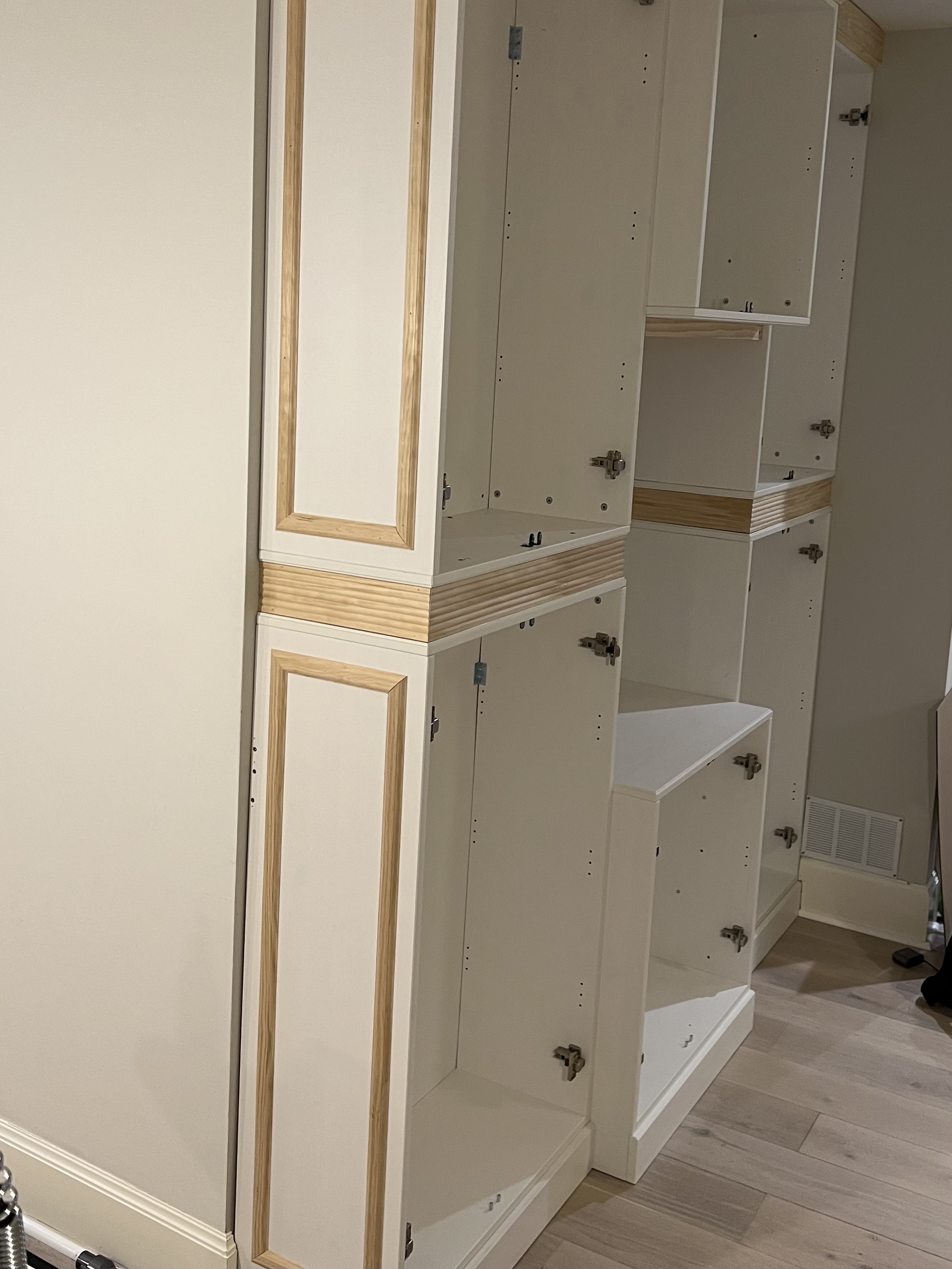
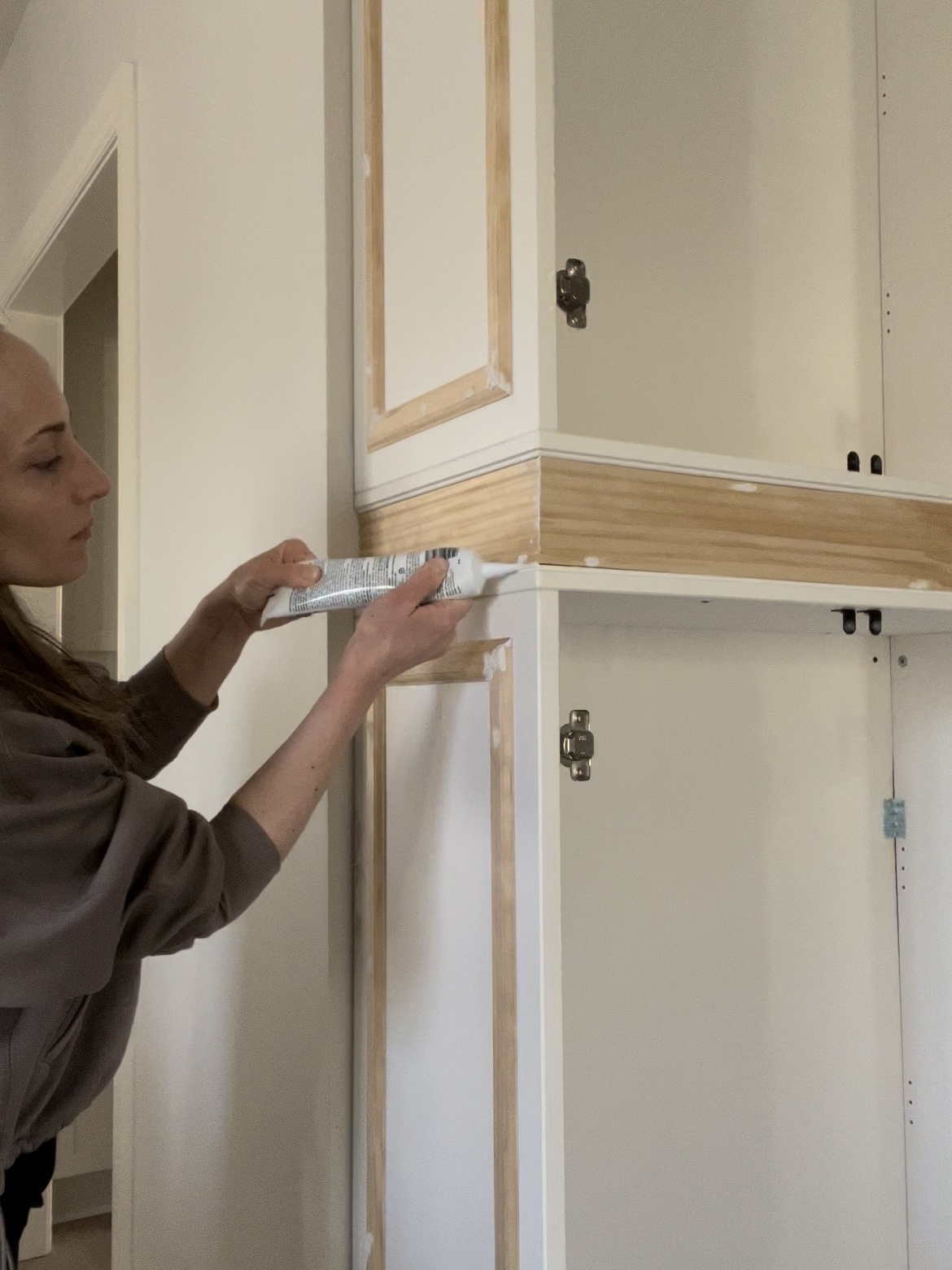
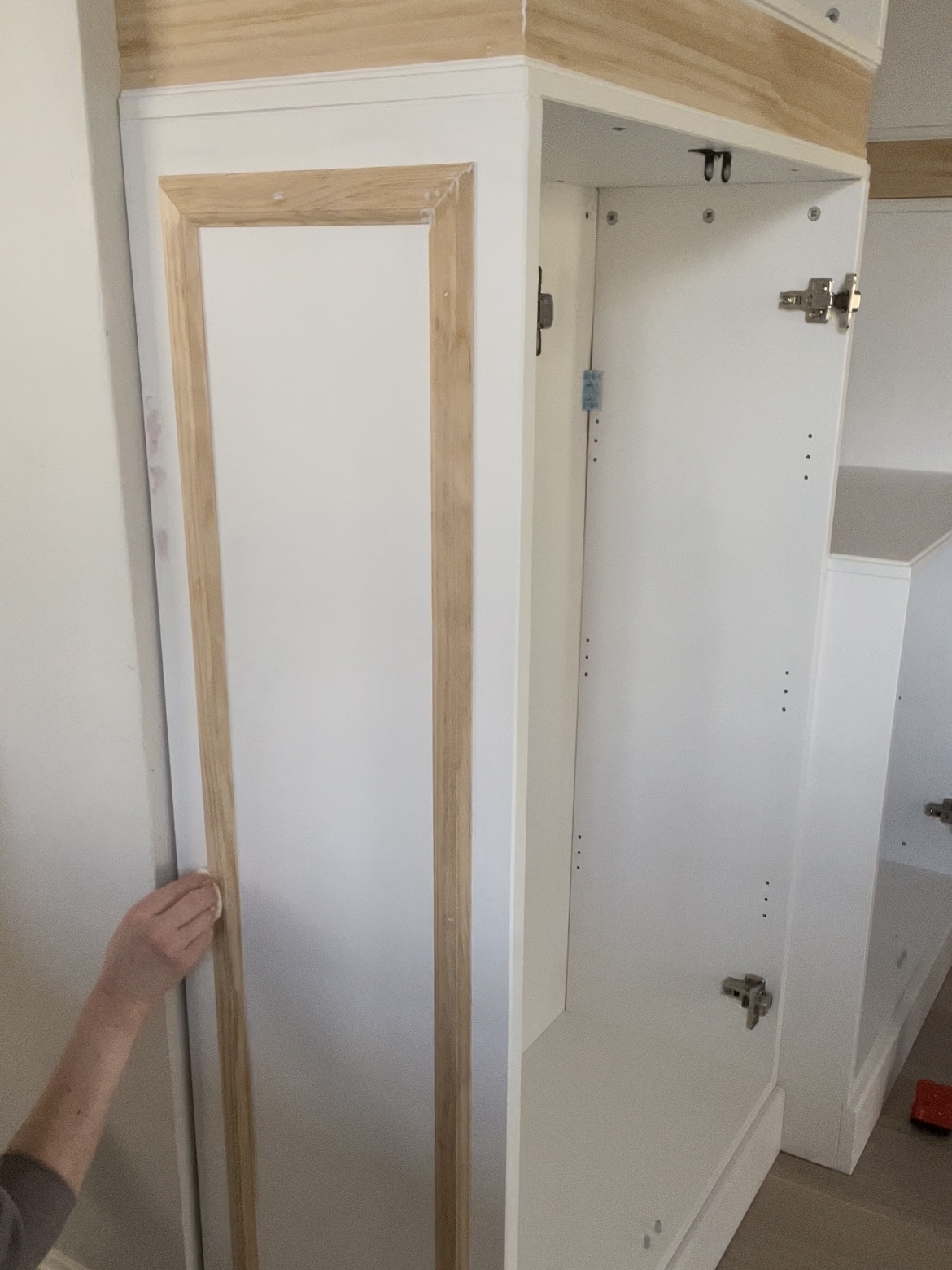
Trimming the Exposed Side
For the exposed side, I used the same trim that I used in our office makeover to create the picture moulding look. I chose this trim because it’s not bulky, and was a subtle way to make it look more finished.
The Paint – Coffee Nook for the Coffee Nook
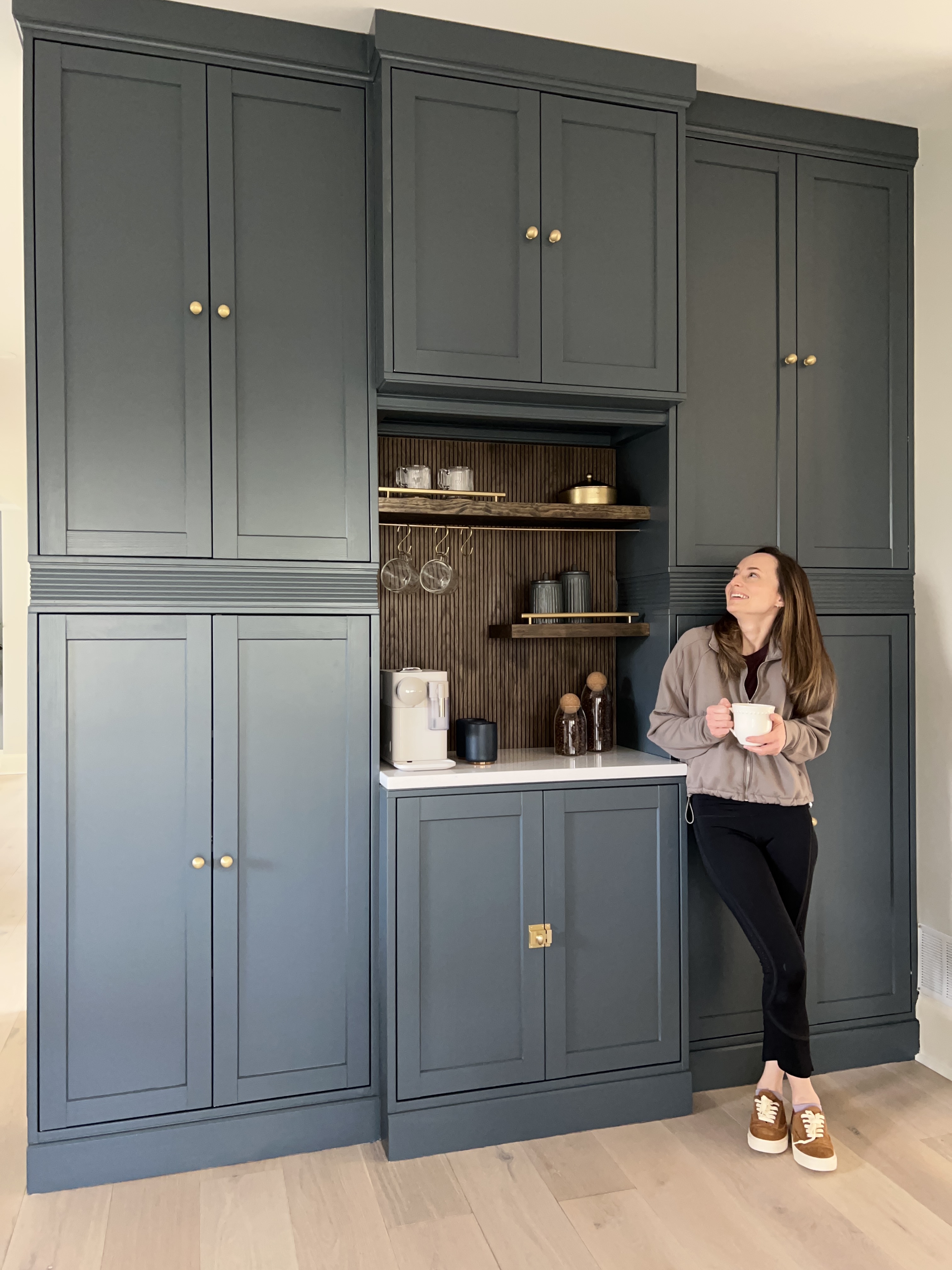
Finding the perfect paint color can take forever. I came across this one by accident. The plan was to get a Sherwin Williams color since I love their trim paint, but they didn’t have the base I needed in stock.
I ended up at Ace Hardware and fell in love with Magnolia’s “Coffee Nook” color… It’s the perfect grey/navy combo!
The Magnolia brand paint didn’t have the right base in stock either, so this paint is Benjamin Moore’s Advanced trim paint, color matched to Magnolia’s Coffee Nook.
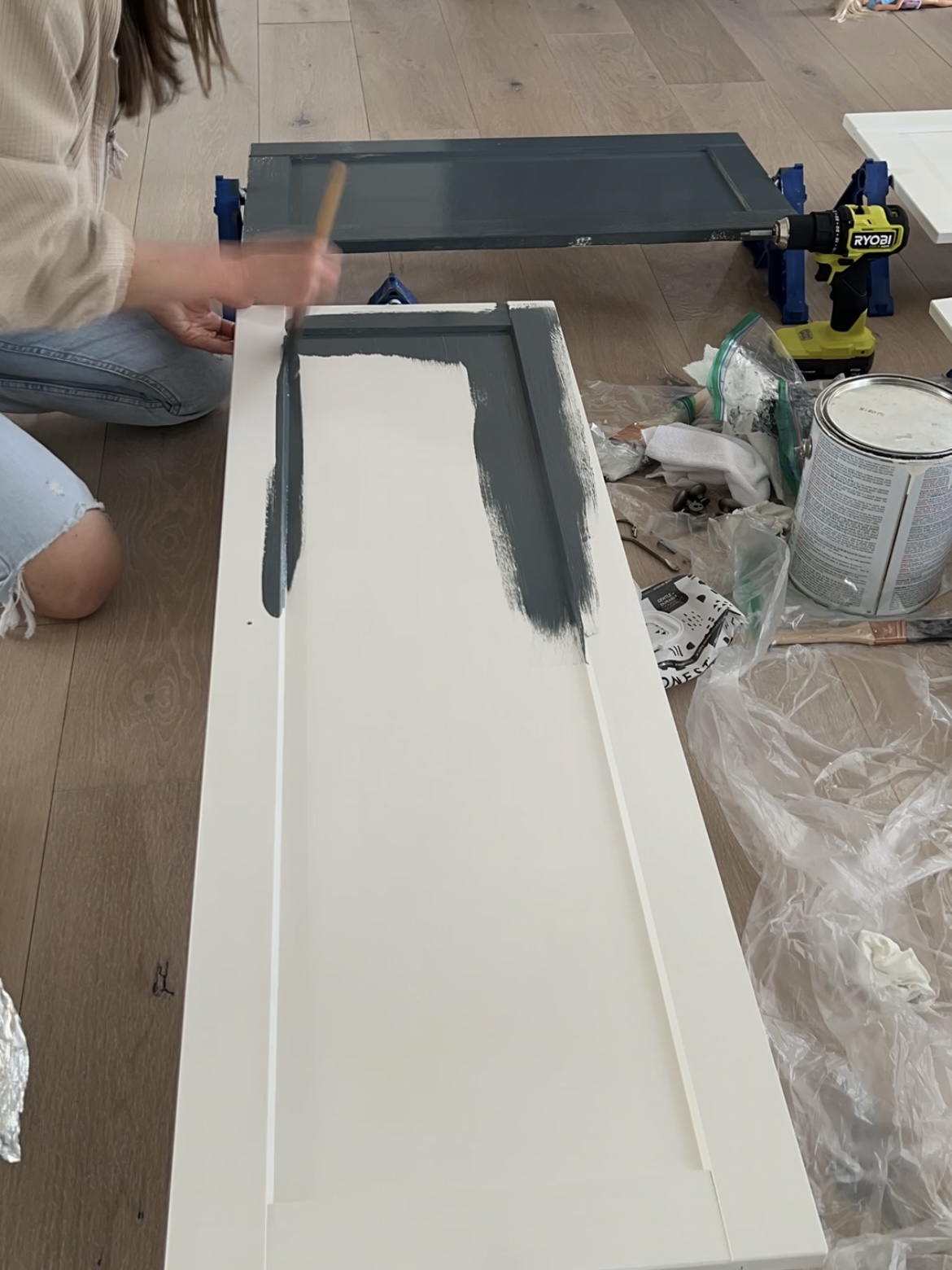
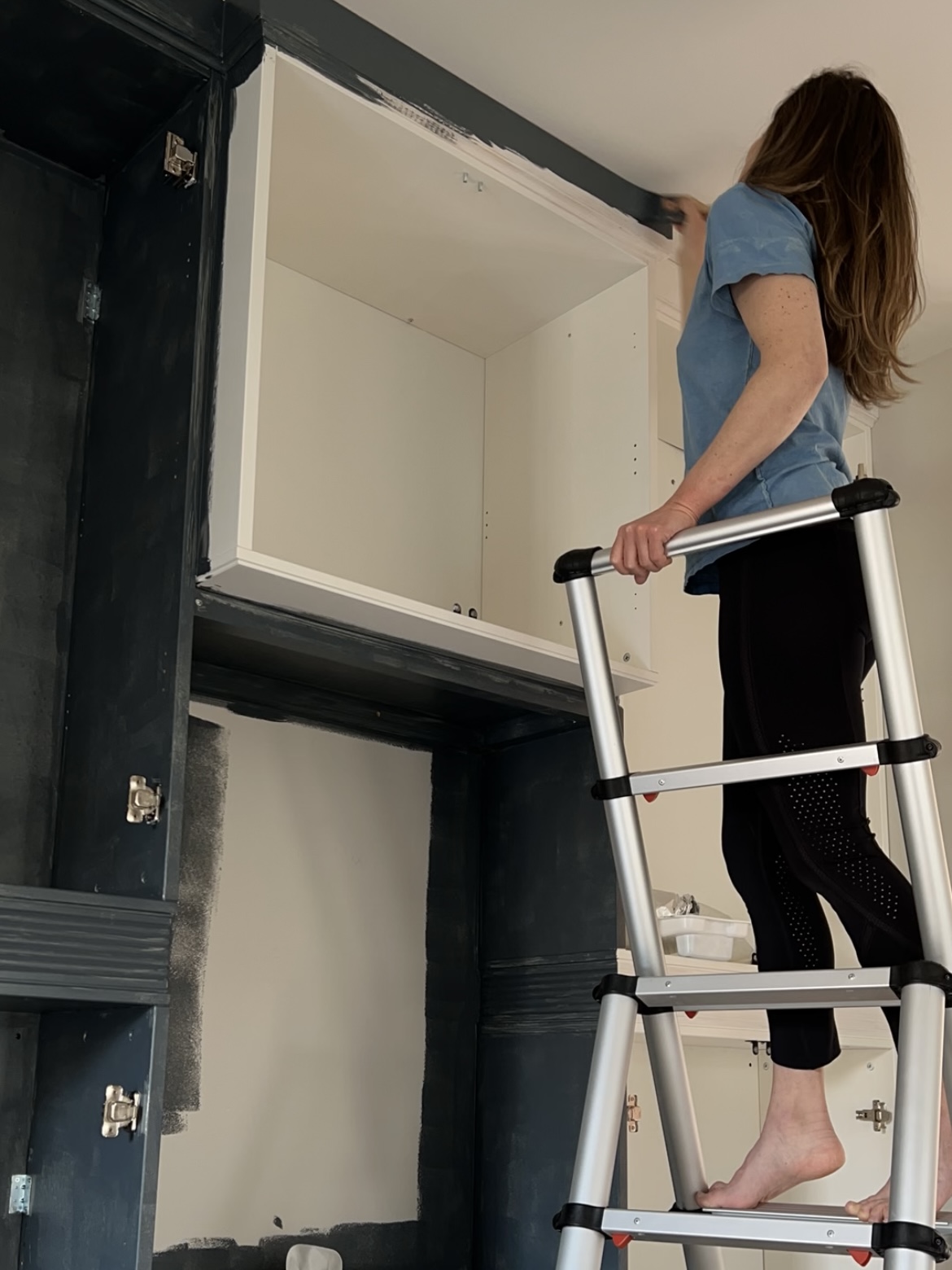
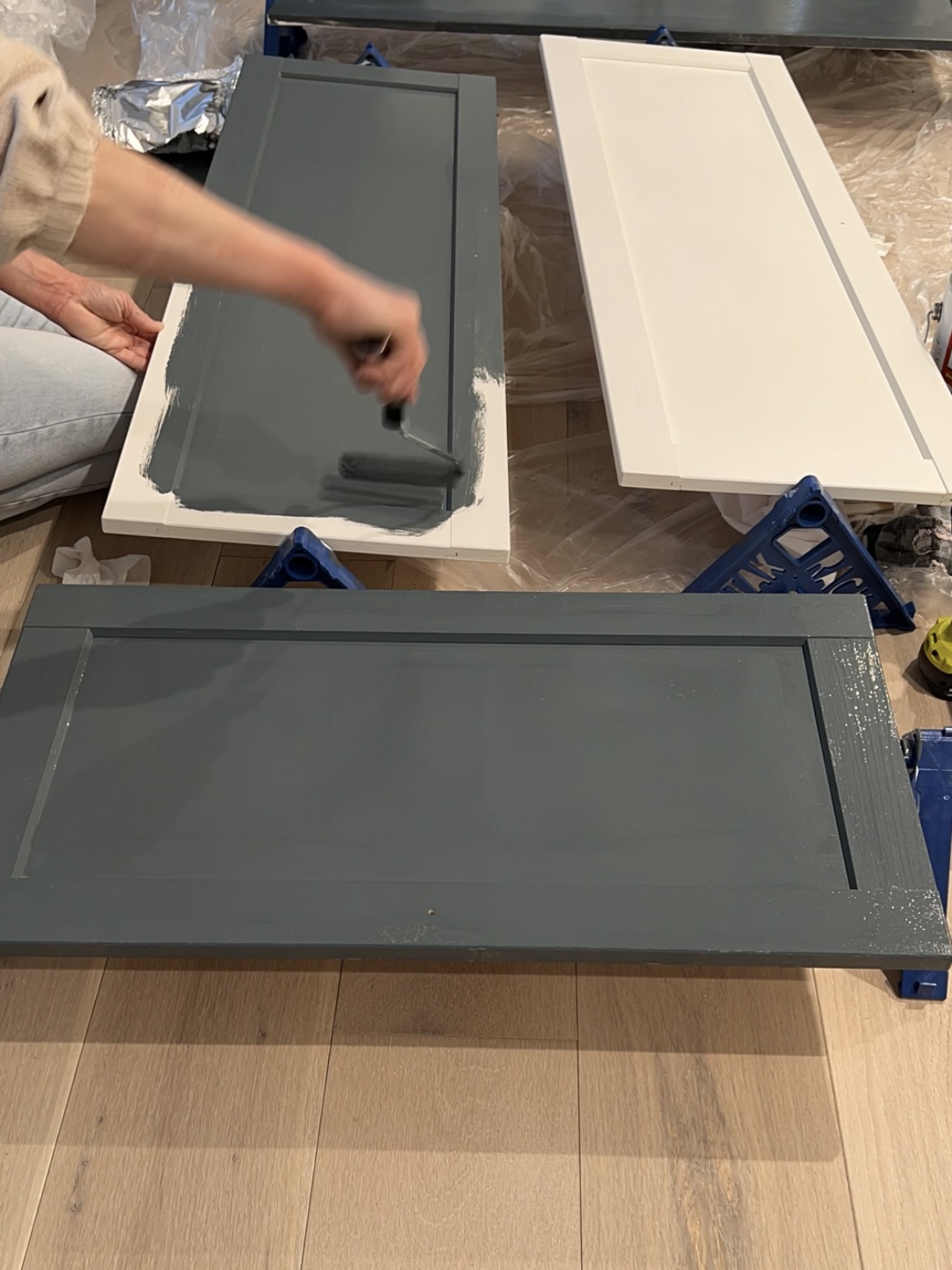
Tips for Painting IKEA
*Don’t forget to use BIN primer, lightly sand after the primer has dried, and wipe off all the dust before starting with the actual trim paint! This primer was recommended to me to help paint adhere to IKEA cabinets.
**Good trim paint makes a huge difference – and make sure you give it the full time required to fully cure! I messed with things too early which caused chips. They’re easy to touch up but should be avoidable if you follow directions.
Coffee Nook Backsplash
I researched tile for hours before deciding that I wanted the warmth of stained wood with the navy cabinets haha. I’m so glad I landed on the stained pole wrap!
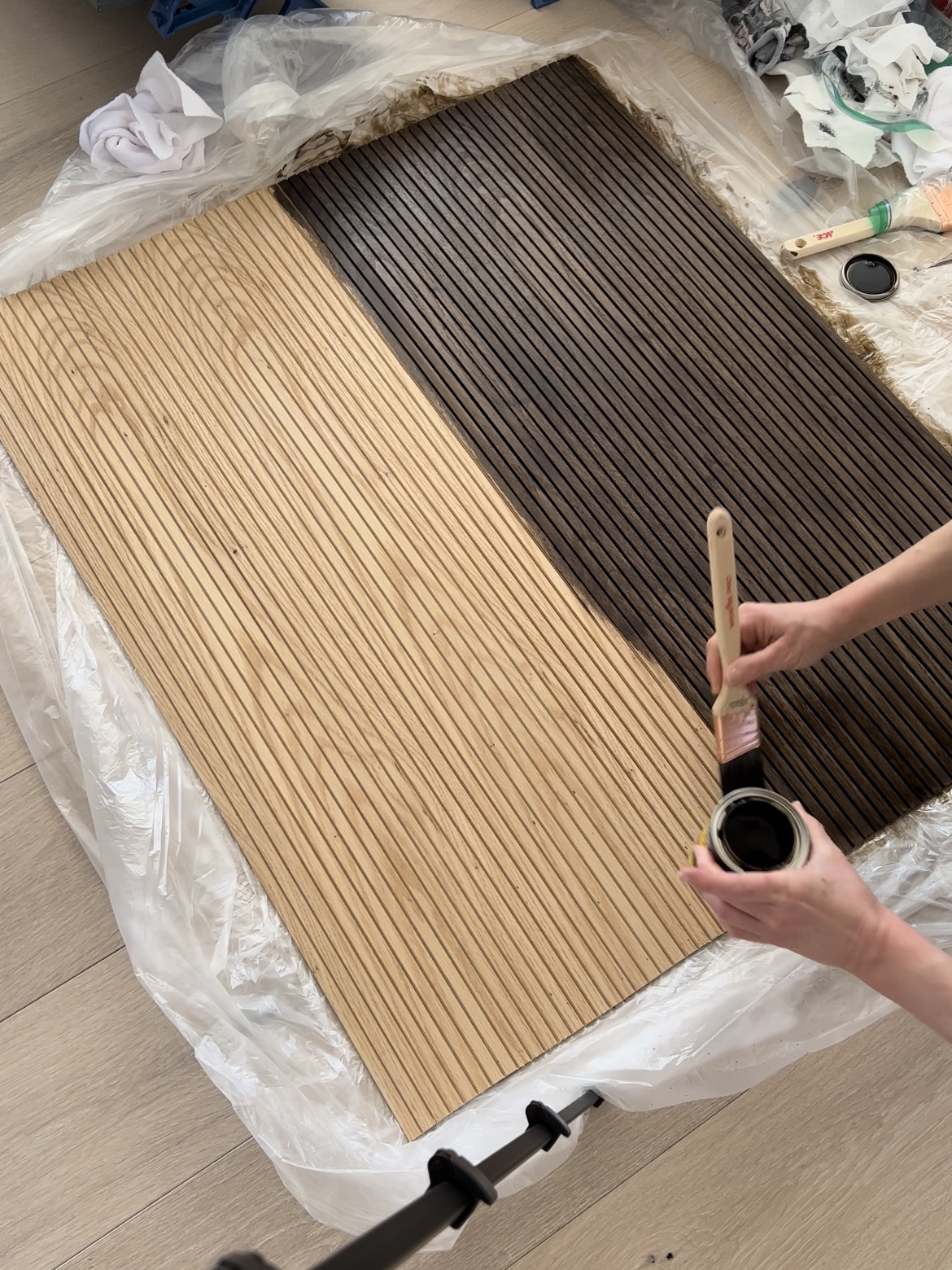

This is my first experience staining pole wrap (linked here), and it was a success! I brushed on the pre-stain wood conditioner and quickly wiped off the excess. Then I painted on the dark walnut semi-transparent stain. I let it sit for a little while, wiped off any excess, then let it dry thoroughly before attaching it to the wall.
Floating Shelves
I did use liquid nails on the back of the pole wrap, but instead of tacking the pole wrap with a ton of nails, I built shelf frames and screwed them into the wall (into studs) over top of the pole wrap. This did such a great job holding the pole wrap in place! I followed Angela Rose Home’s tutorial for the floating shelves.
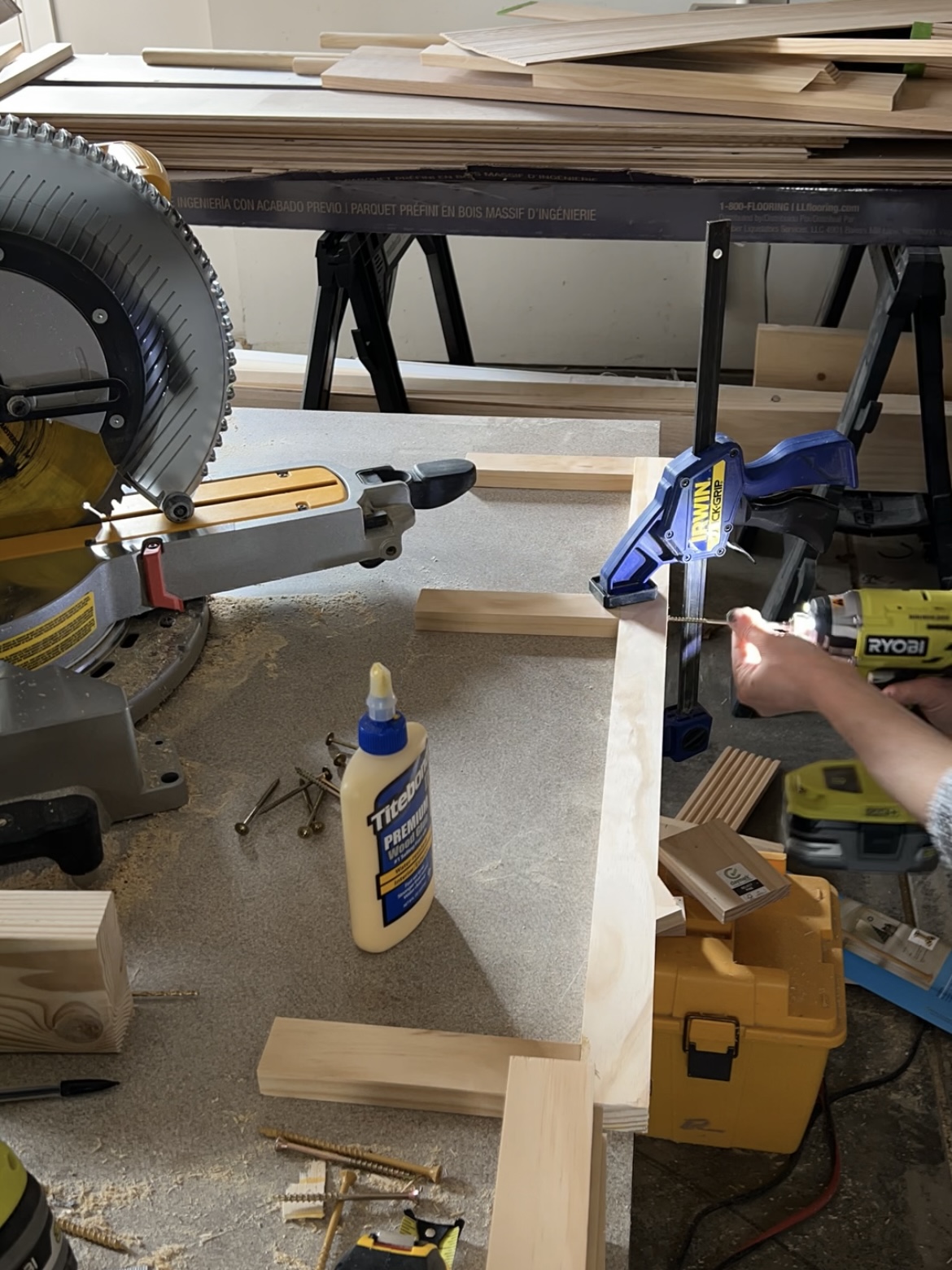
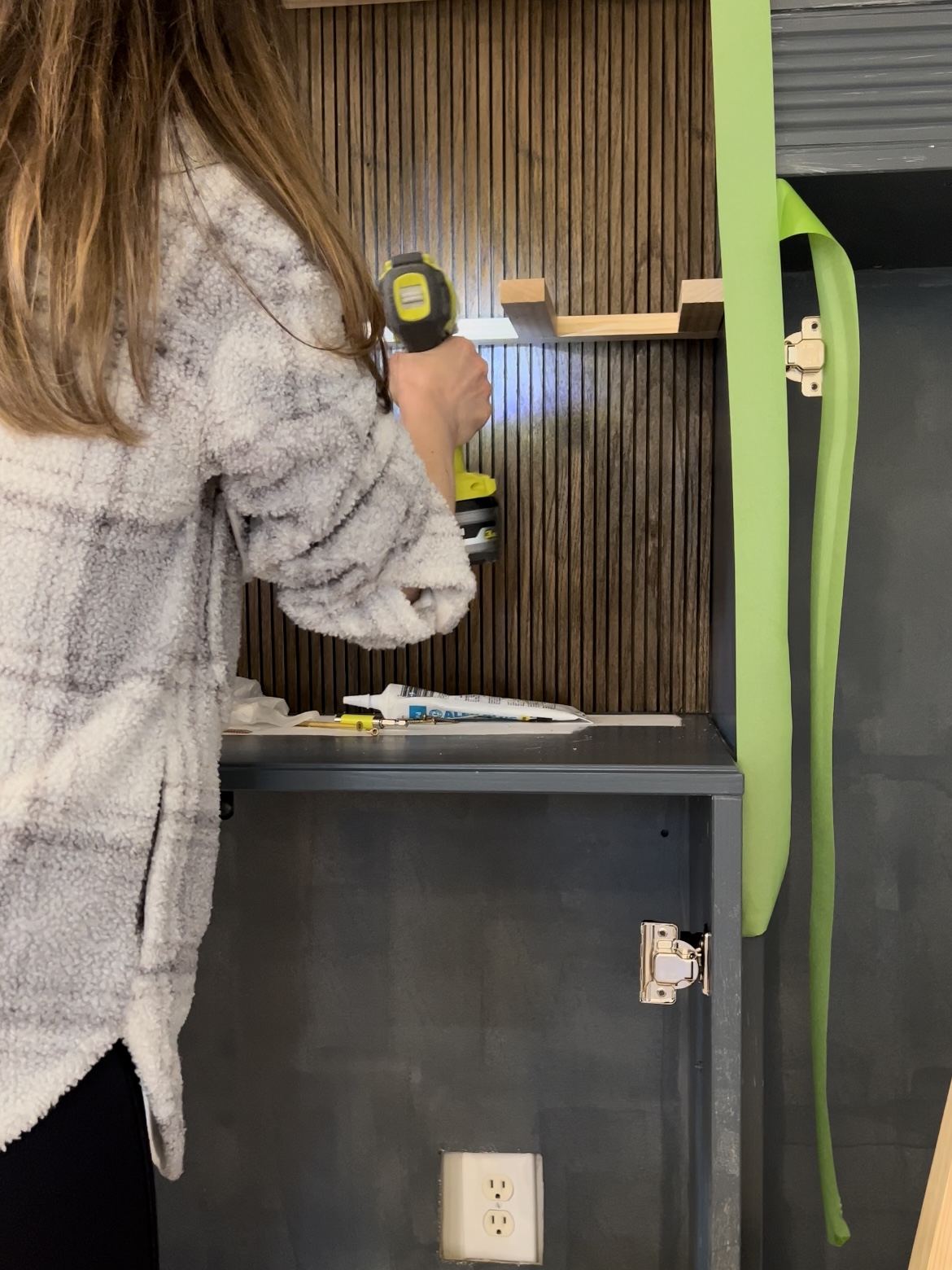
I created a bracket of 1×2 boards screwed into studs, added plywood on top and underneath, and finished off the front with a nice 1×2 board…. so easy and fun to do!
Stone Countertop
The stone countertop was the other thing that held the pole wrap in place. I found this remnant stone at a local granite place. They cut it to size for me and had it ready in a week. Totally would do that again in a heartbeat!
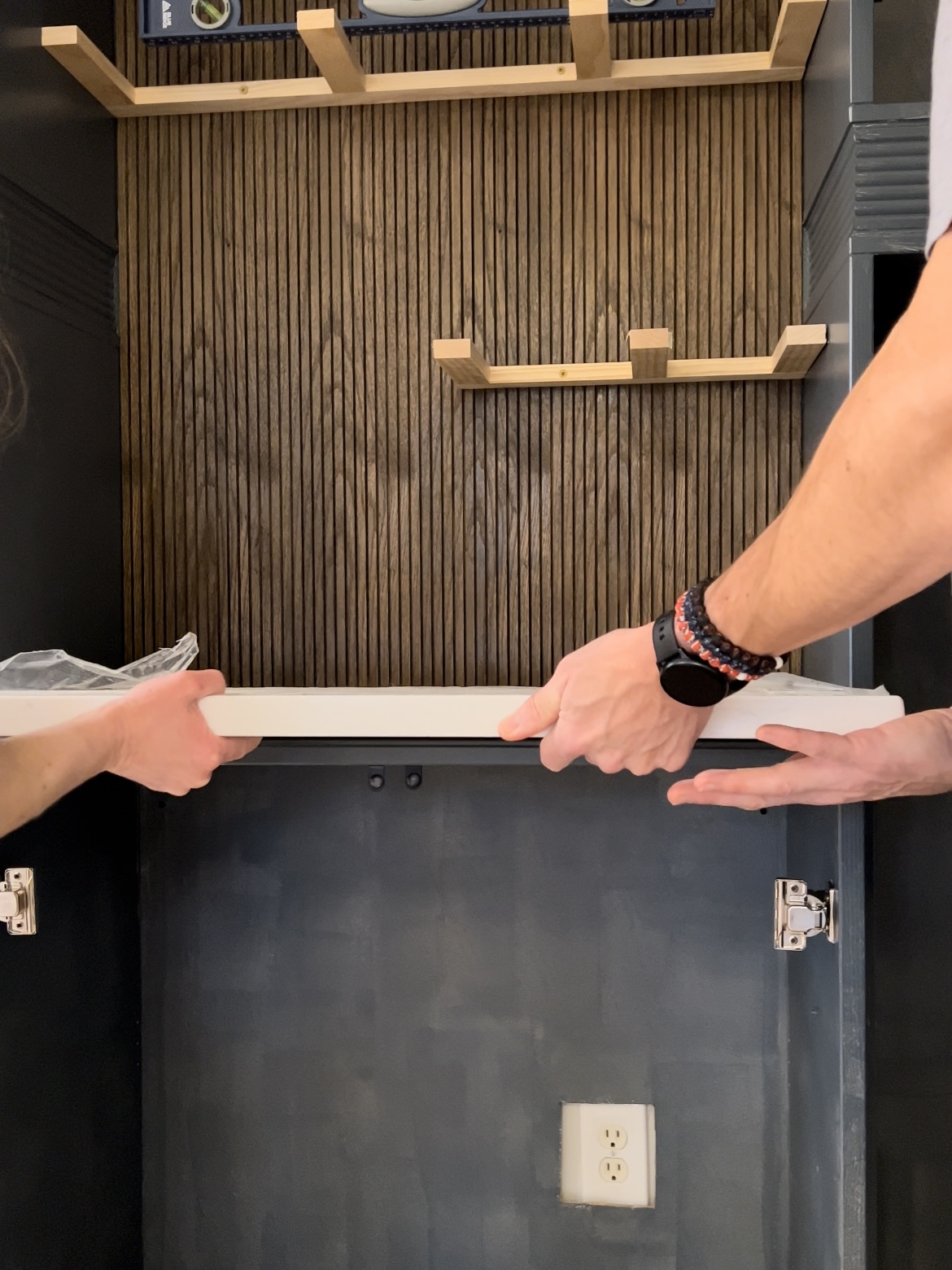
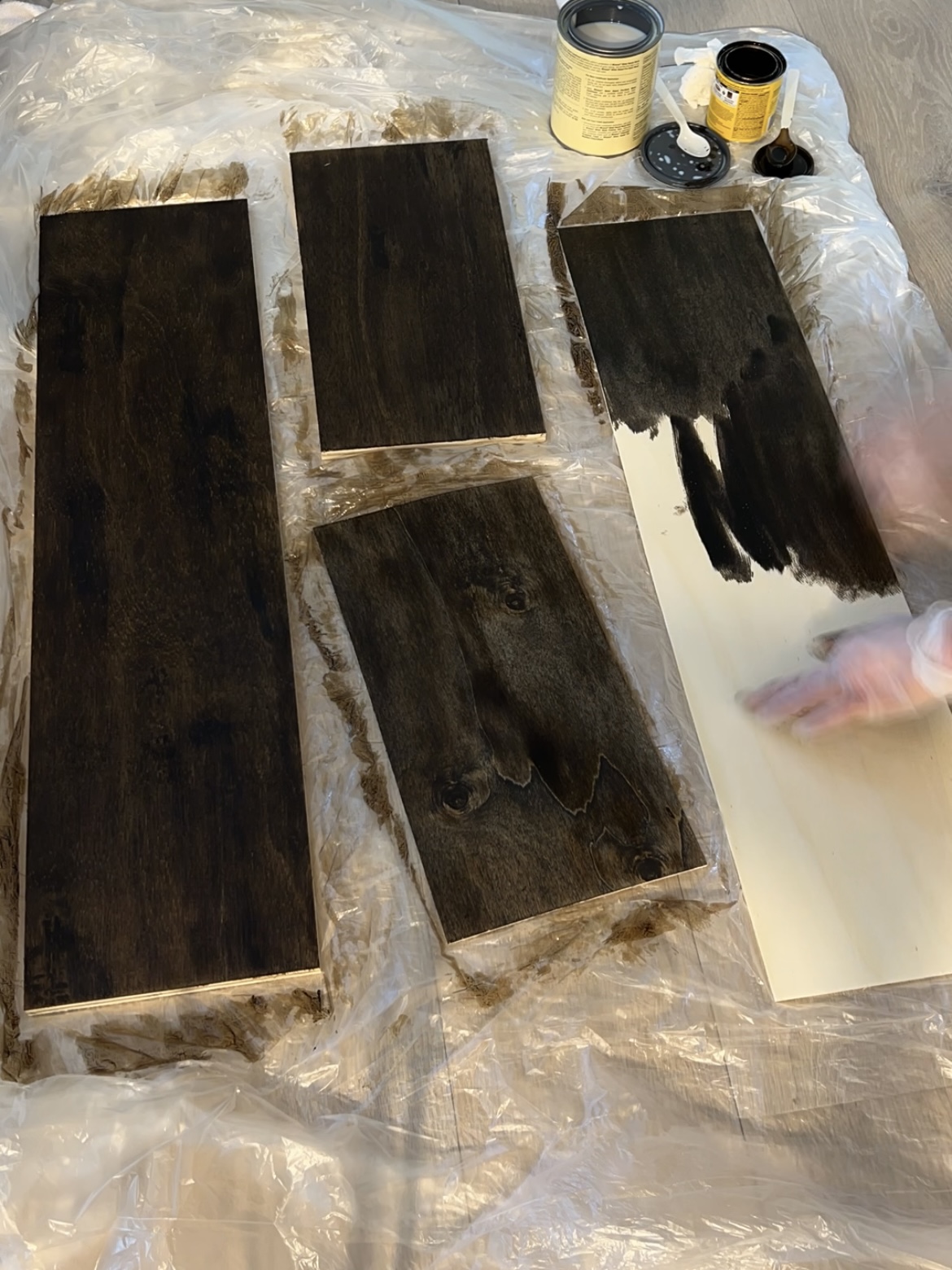

Once the shelves and countertop were in place, I only needed a handful of nails to tack down the rest of the pole wrap.
Coffee Nook Details
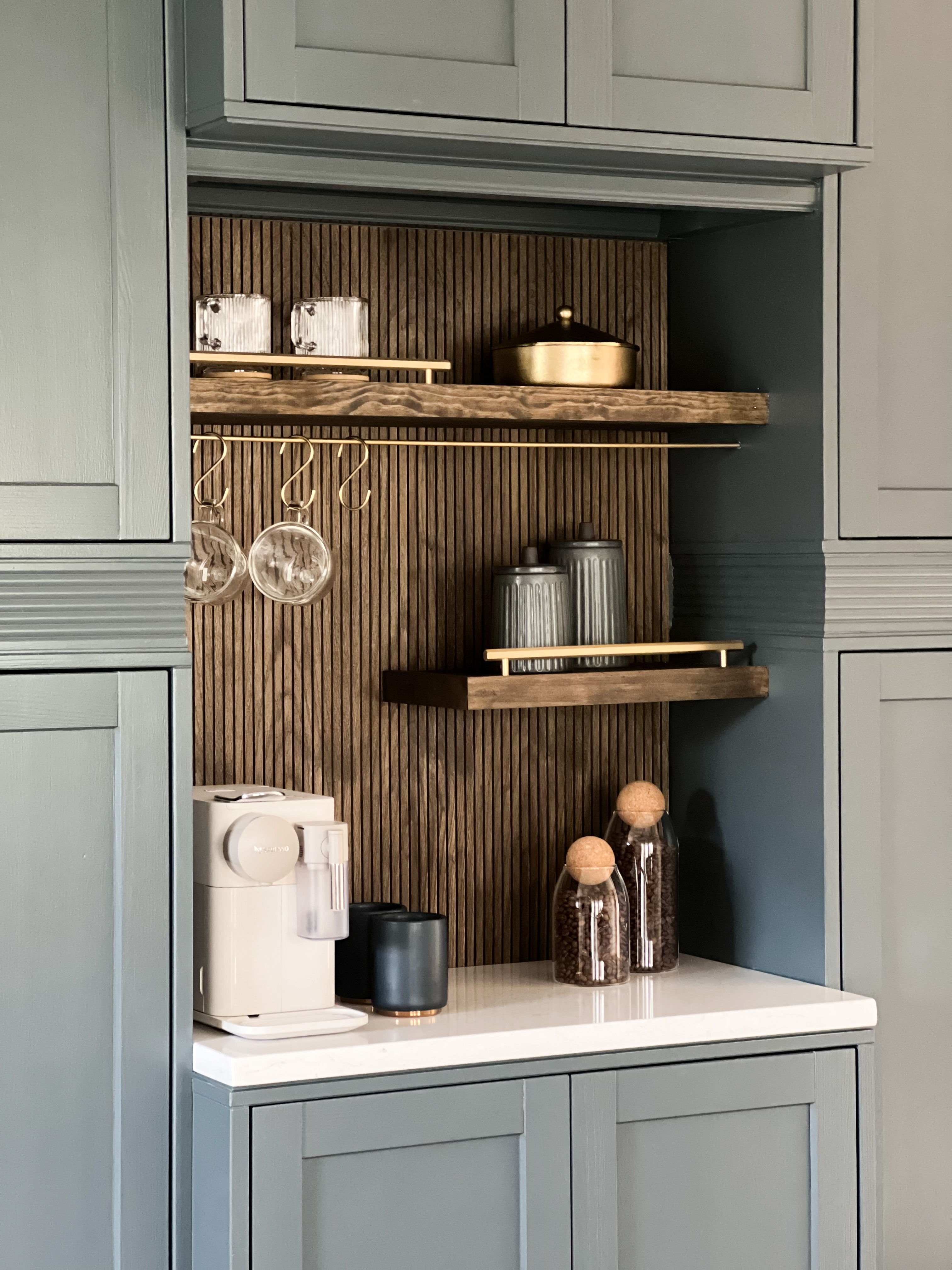
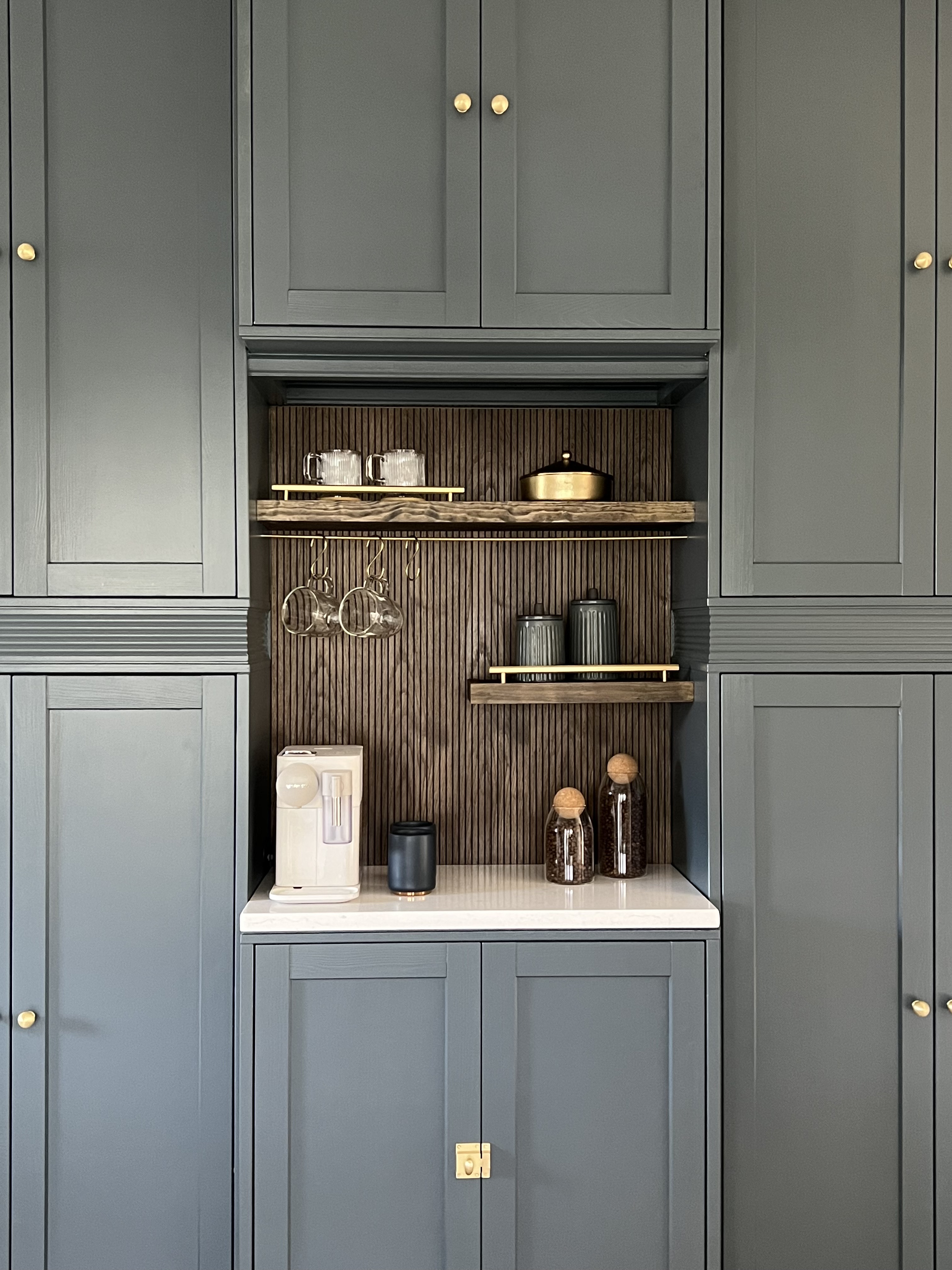
I wanted brass accents on the coffee bar, so I added these CB2 Pulls to the shelves as little guard rails. I had to drill a hole and screw them in from underneath the top layer of plywood before assembling the rest of the shelf.
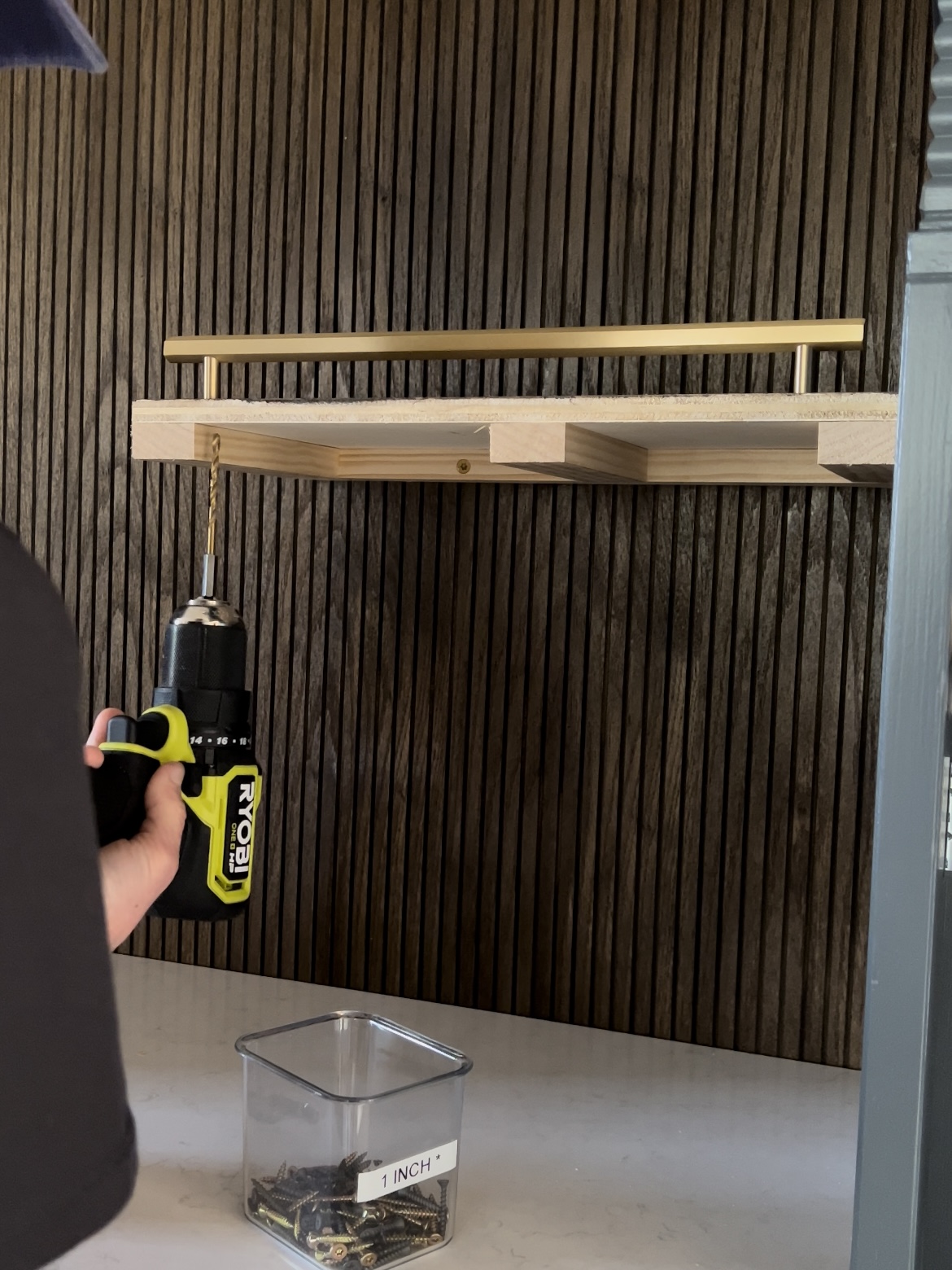
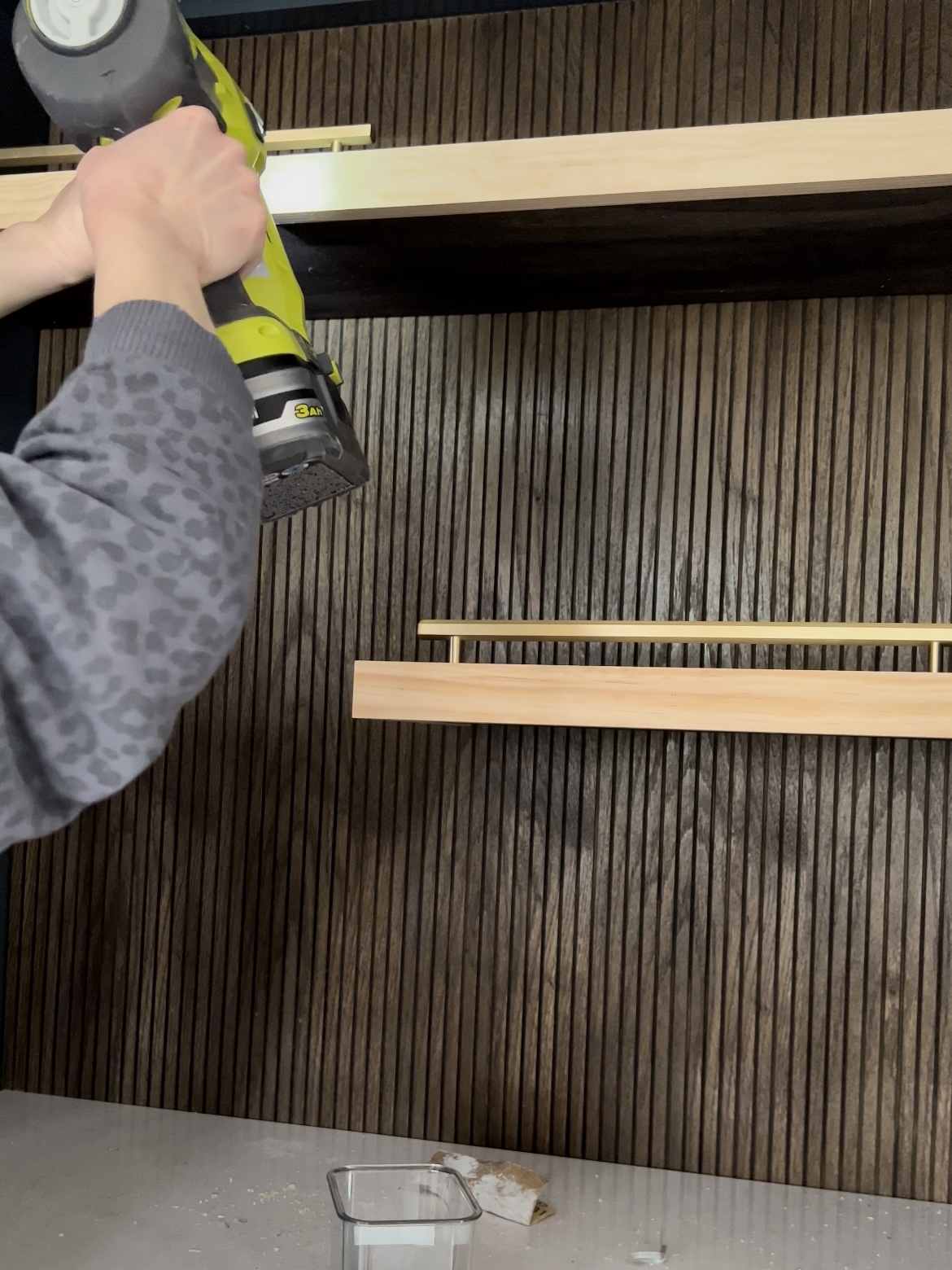
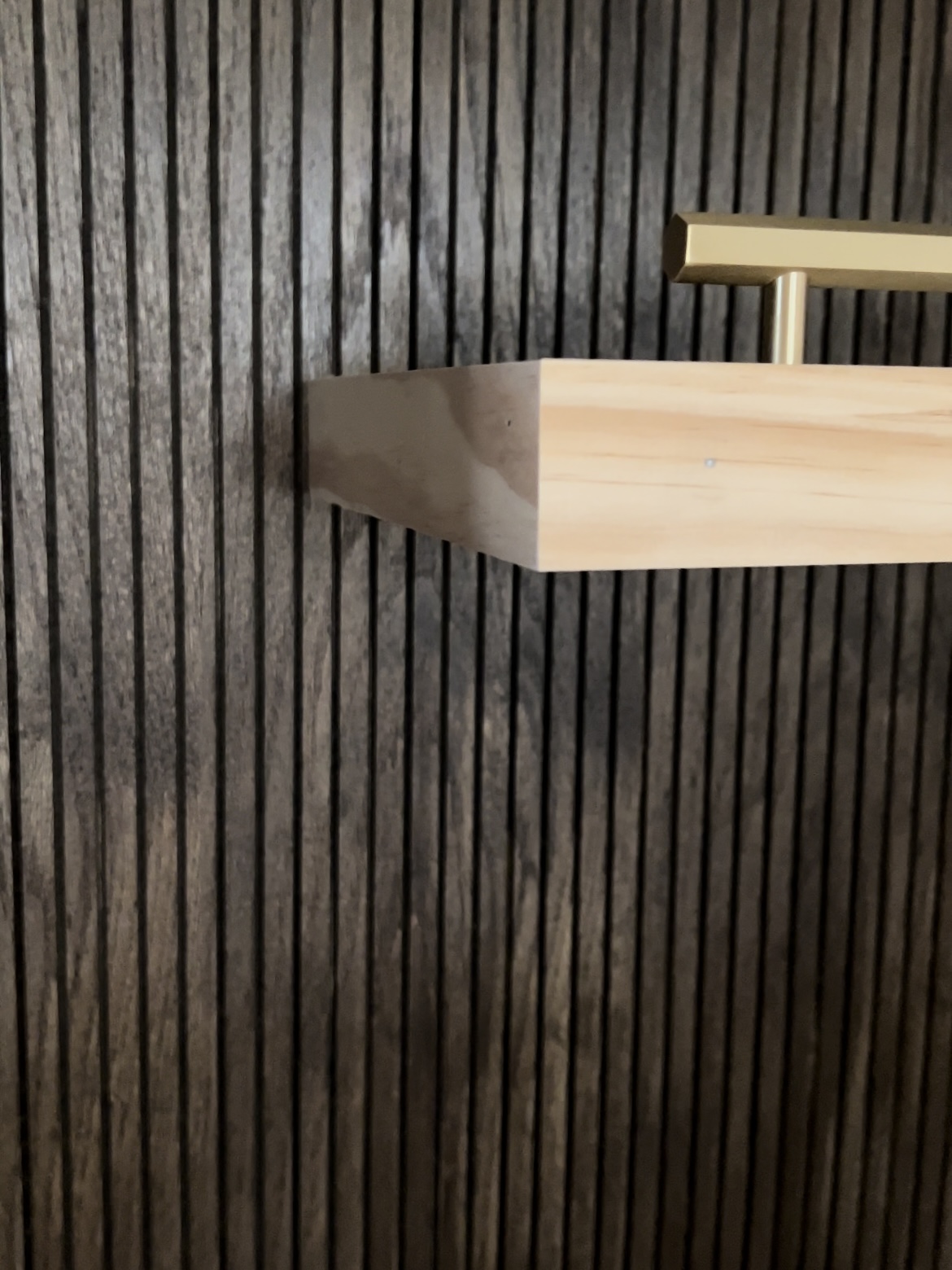
Once the pulls were secure, I added the plywood to the bottom and cut the 1×2 boards for the front and side of the shelves. I then added more pine mullion moulding to the box under the top middle cabinet to give it a more finished look.
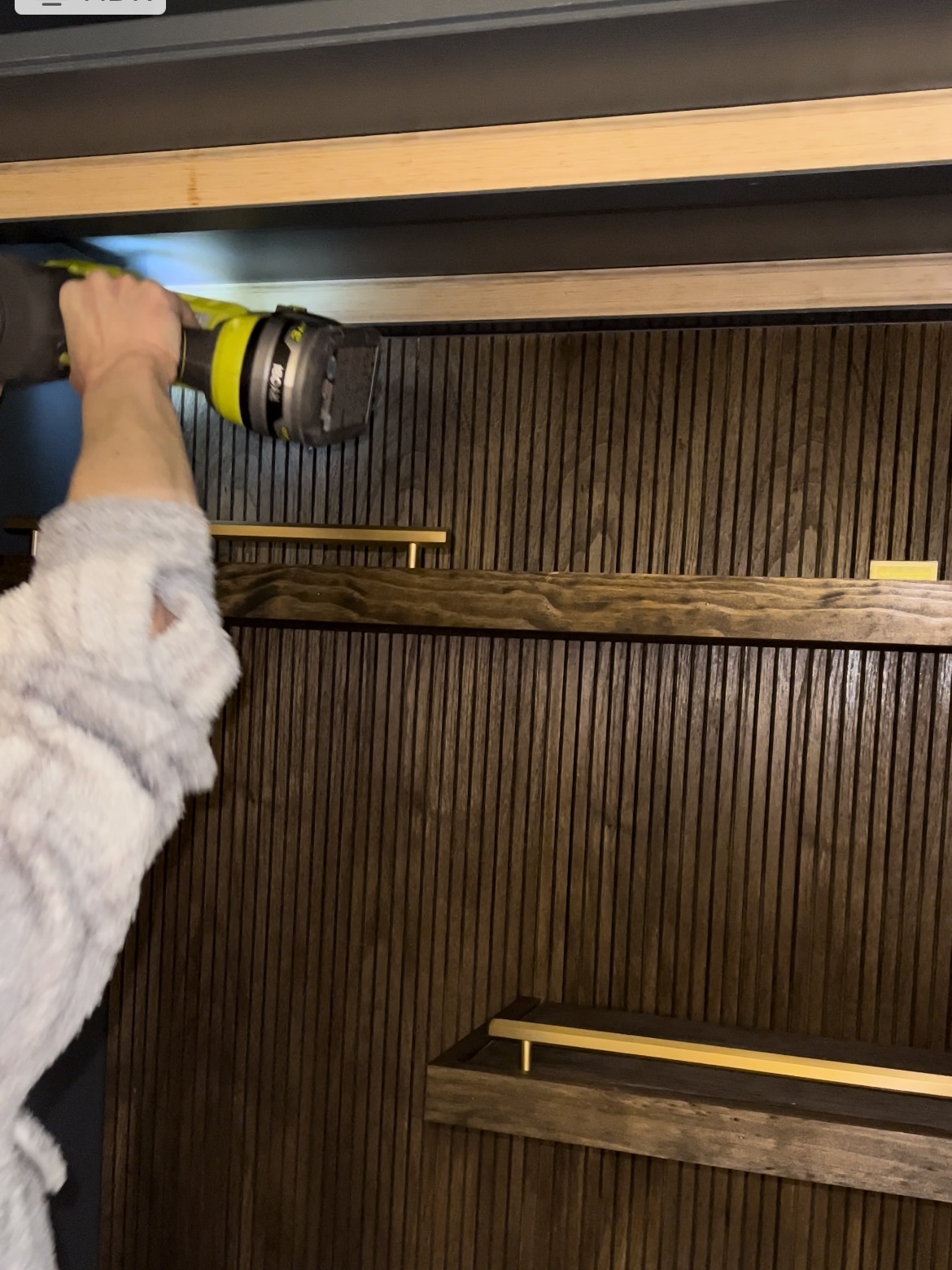
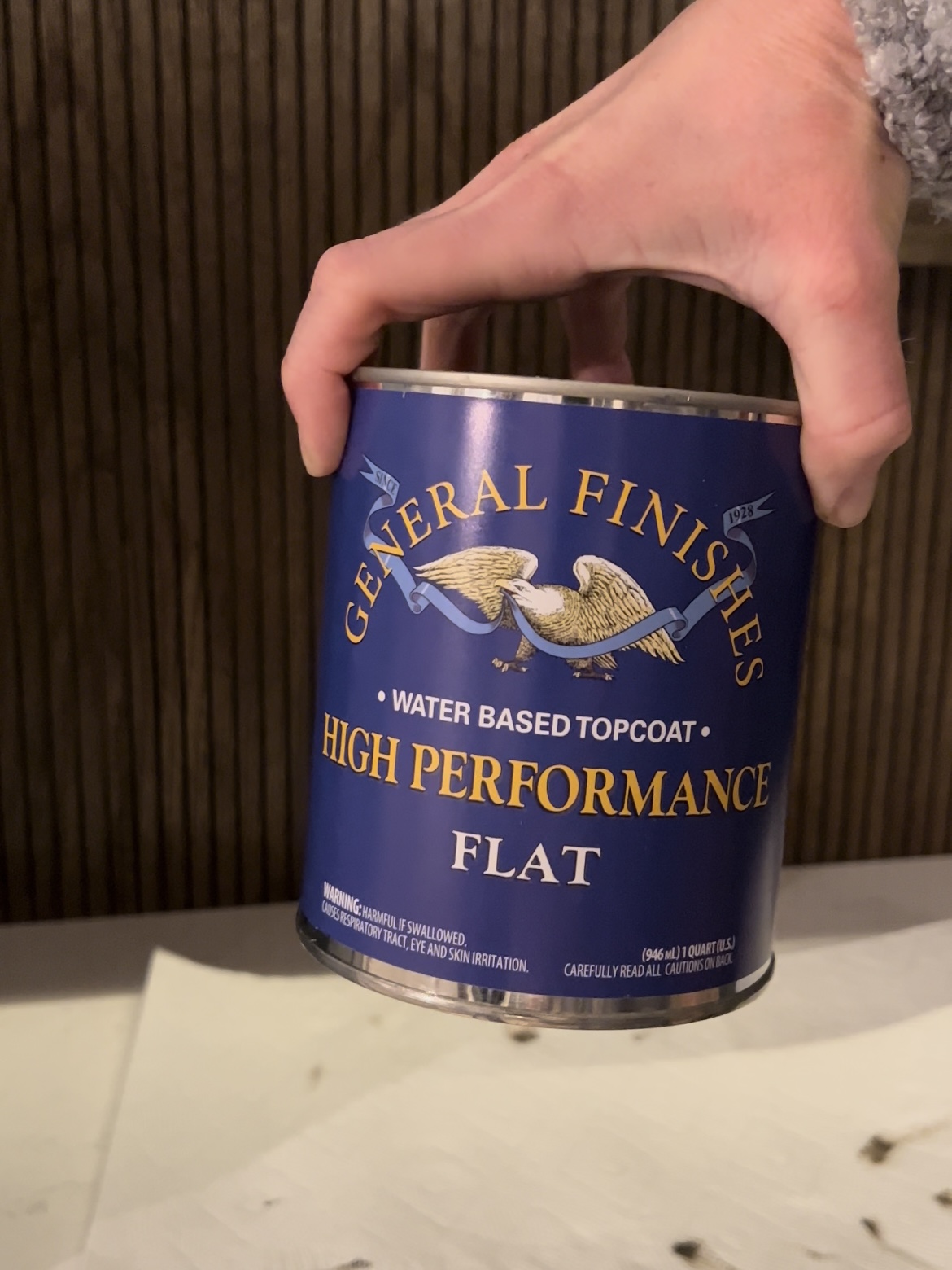
The last step was filling the nail holes with wood putty (pictured below). This is the only product I’ve had success with while filling holes in stained wood!
Once all holes were filled, I sealed the shelves and backsplash with General Finishes High-Performance (Flat).
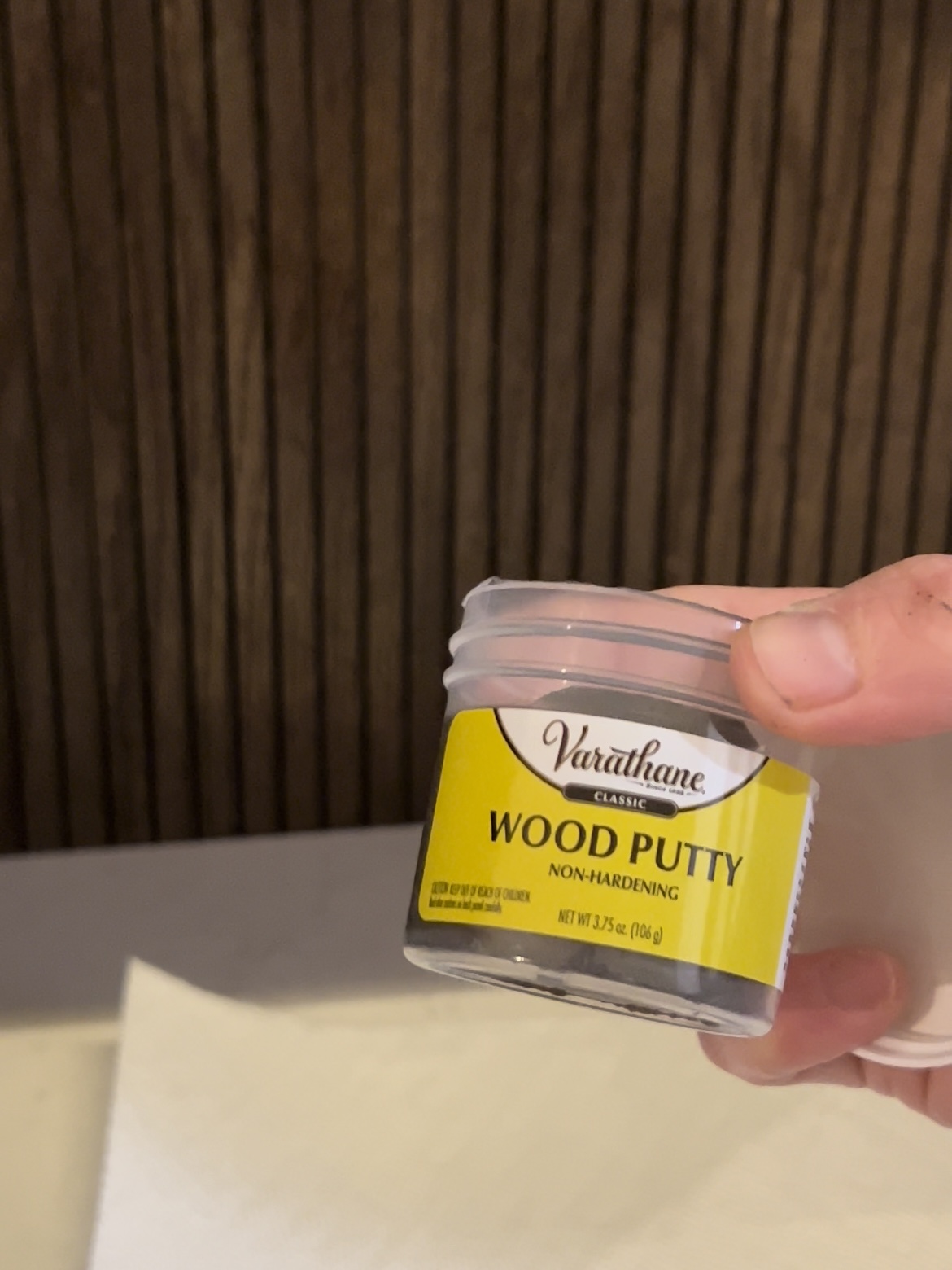
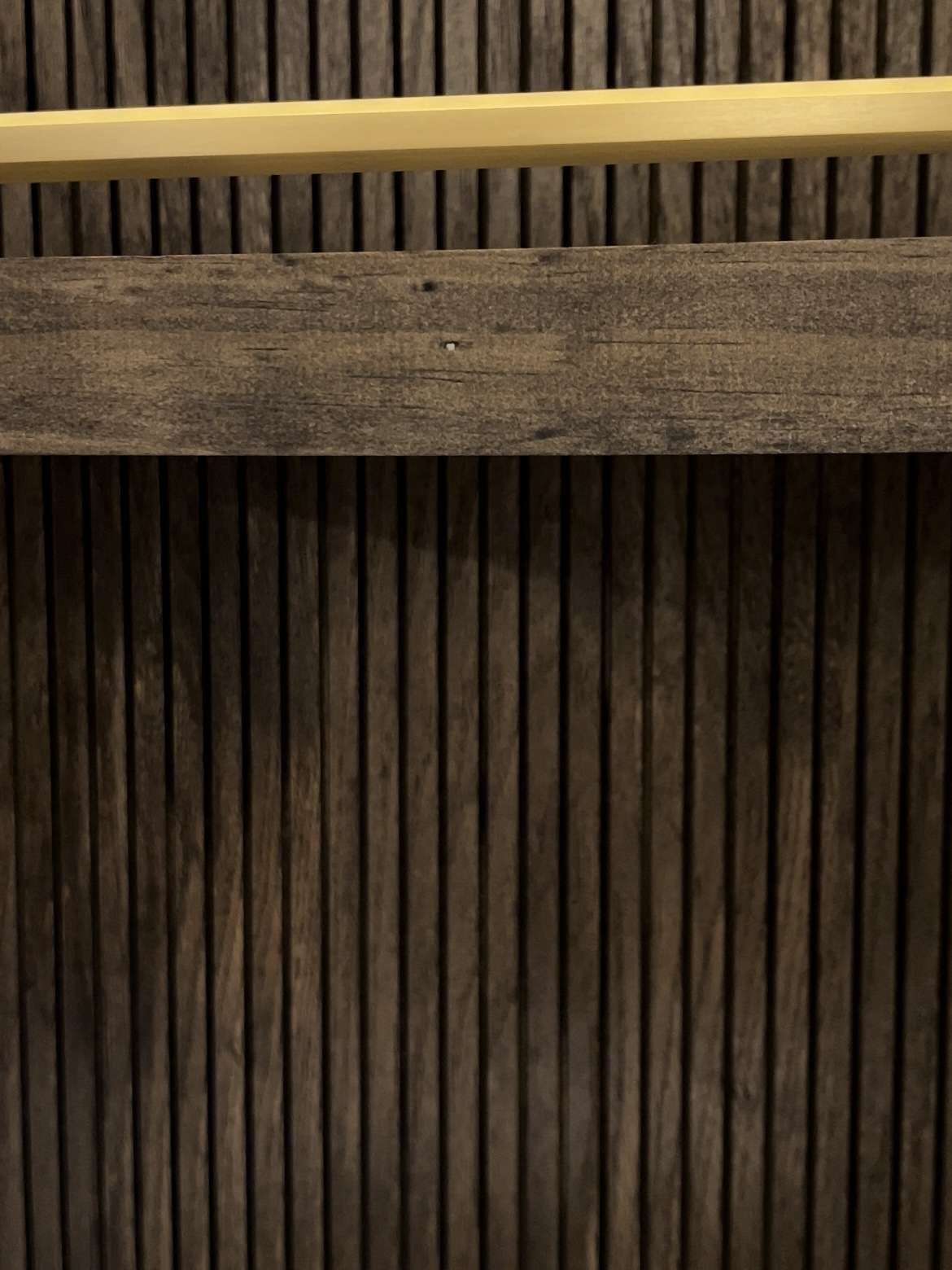
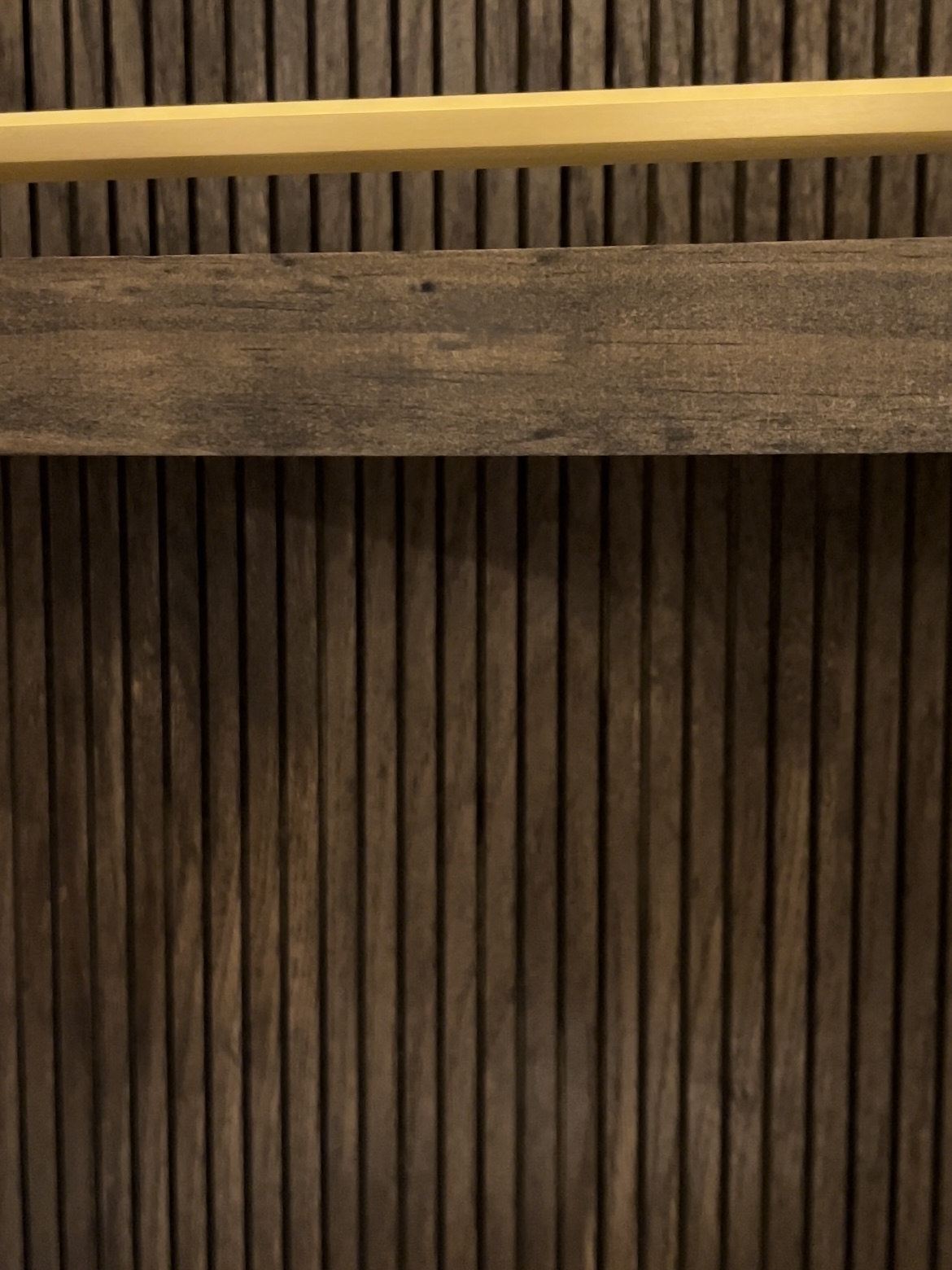
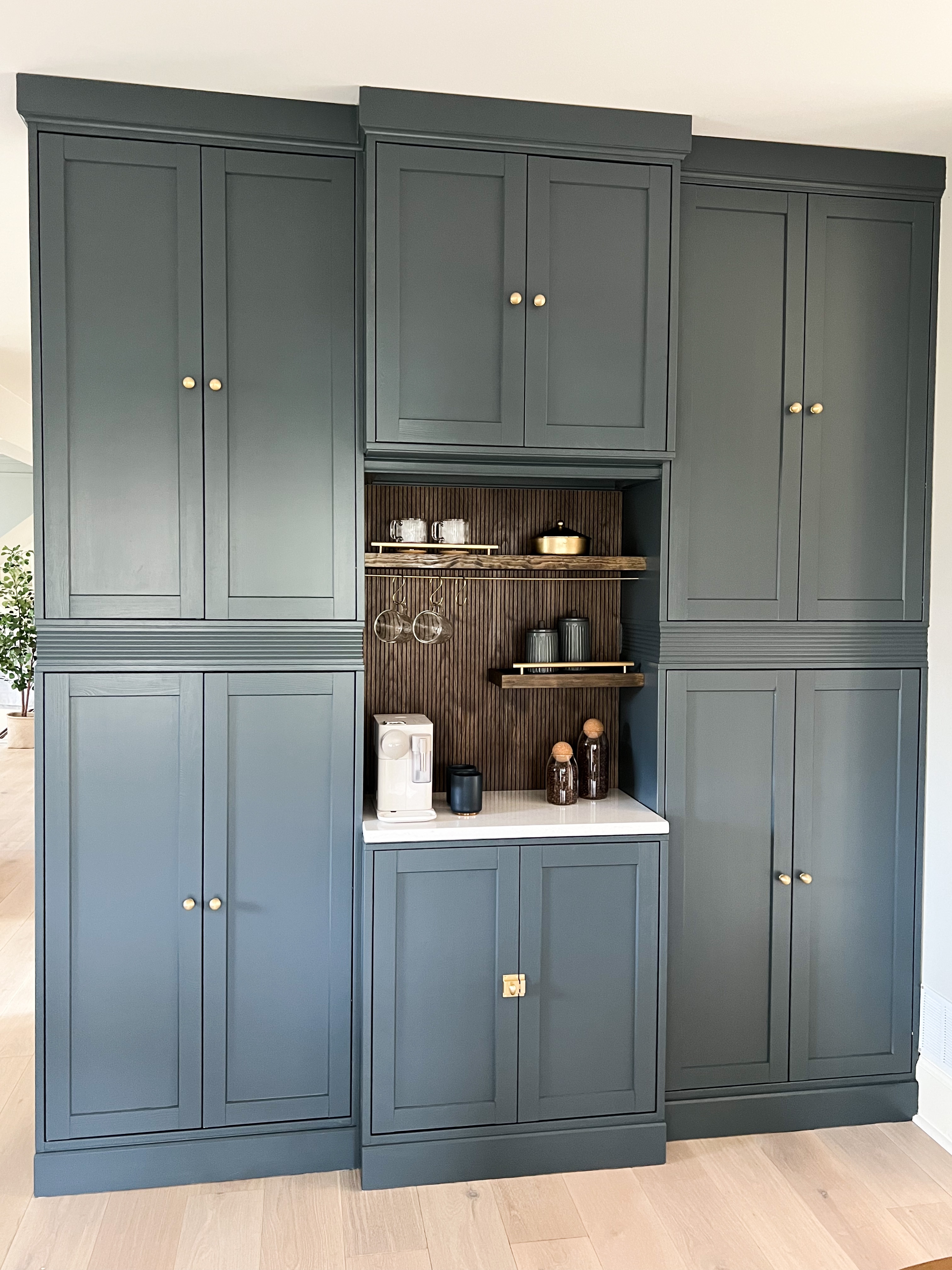
Coffee Nook Mug Bar and Accessories
Last, but not least, I decided to deface the cabinet exterior I worked so hard on by drilling a hole for a coffee mug bar. Luckily it worked out! The 1/2 aluminum bar was pushed all the way through the 1/2″ sized holes. It’s a super tight fit, so I didn’t need to secure it any other way. I rub-n-buffed the bar and used little s-hooks for the mugs. So cute!
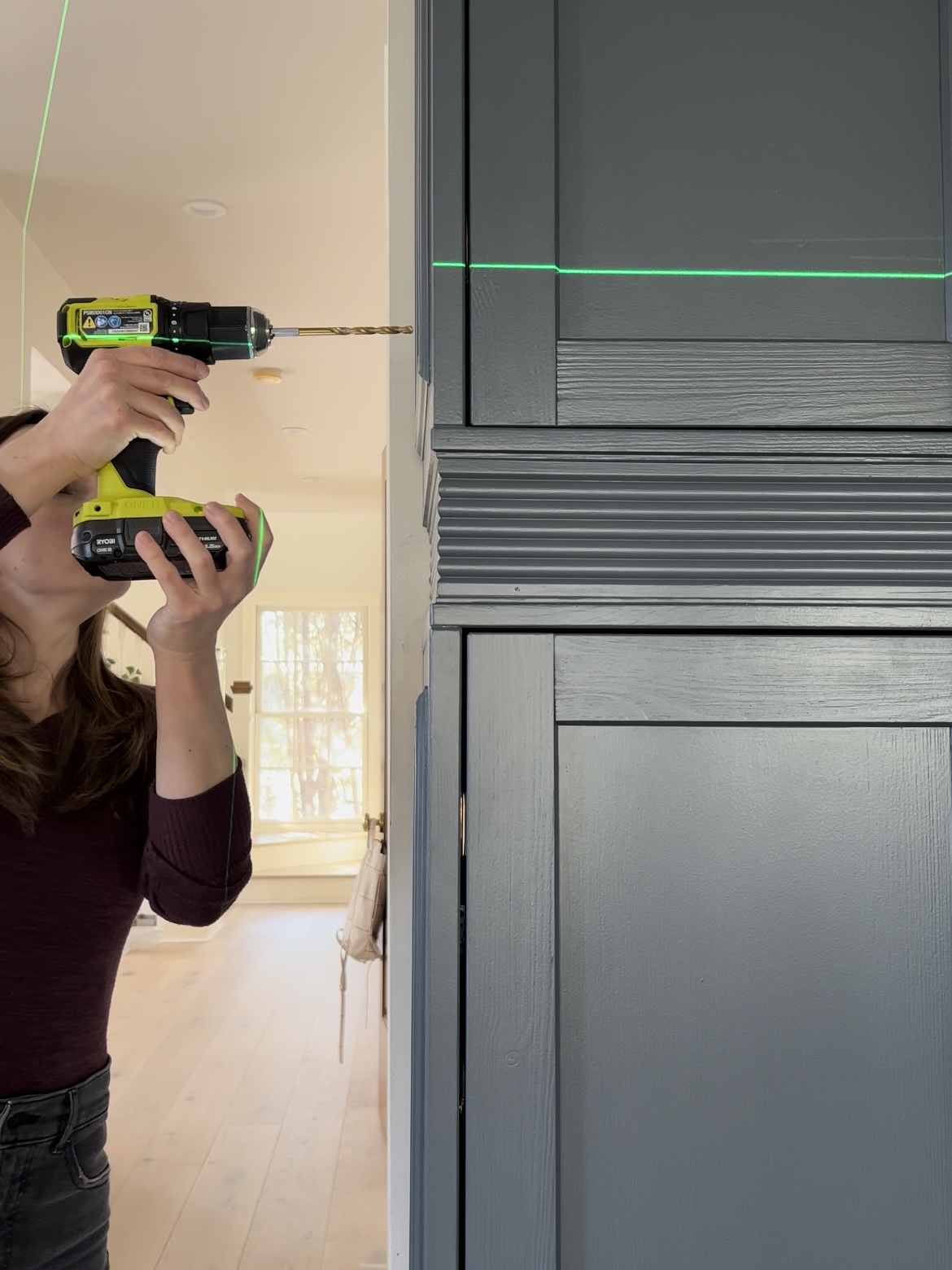
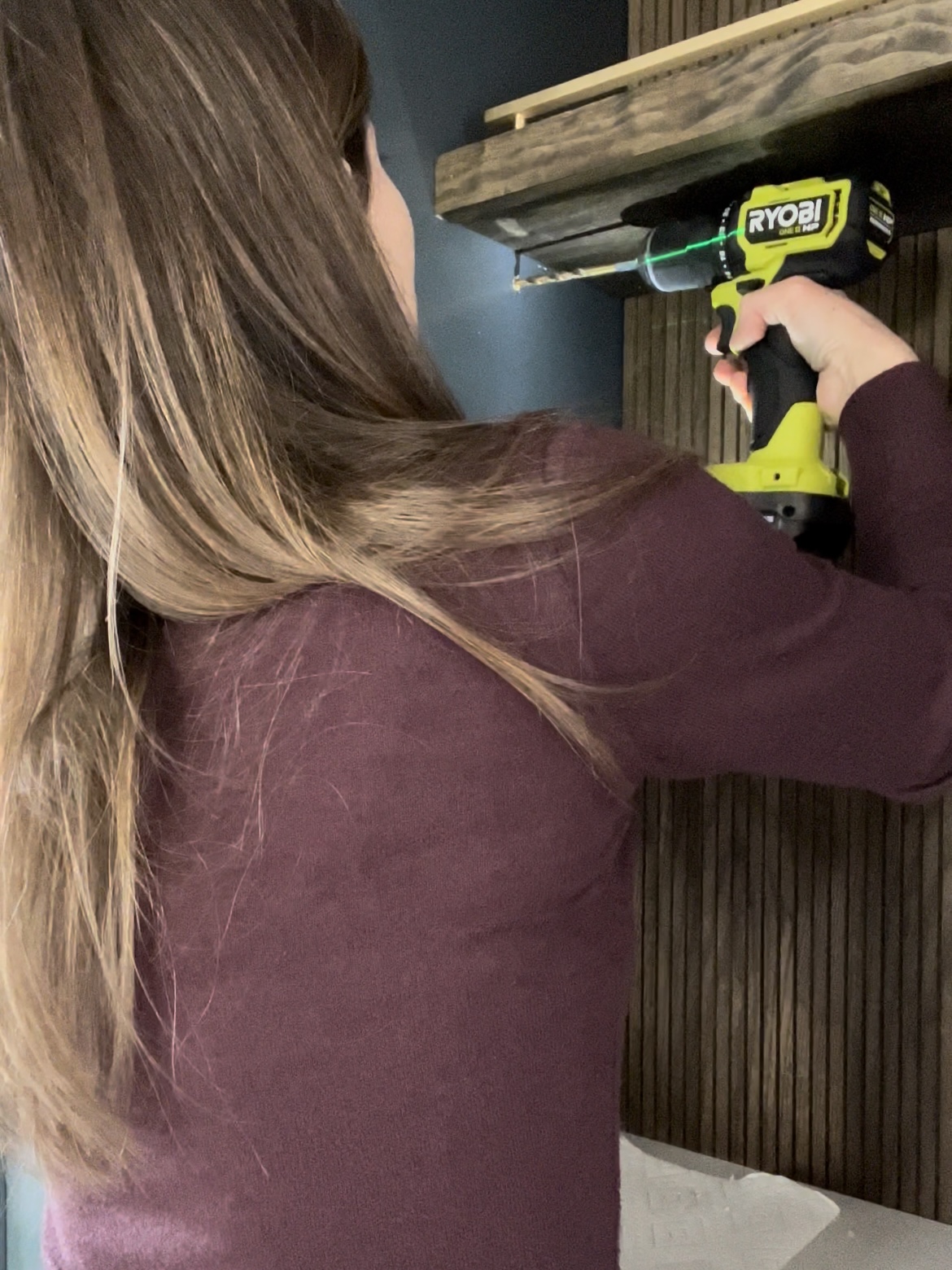
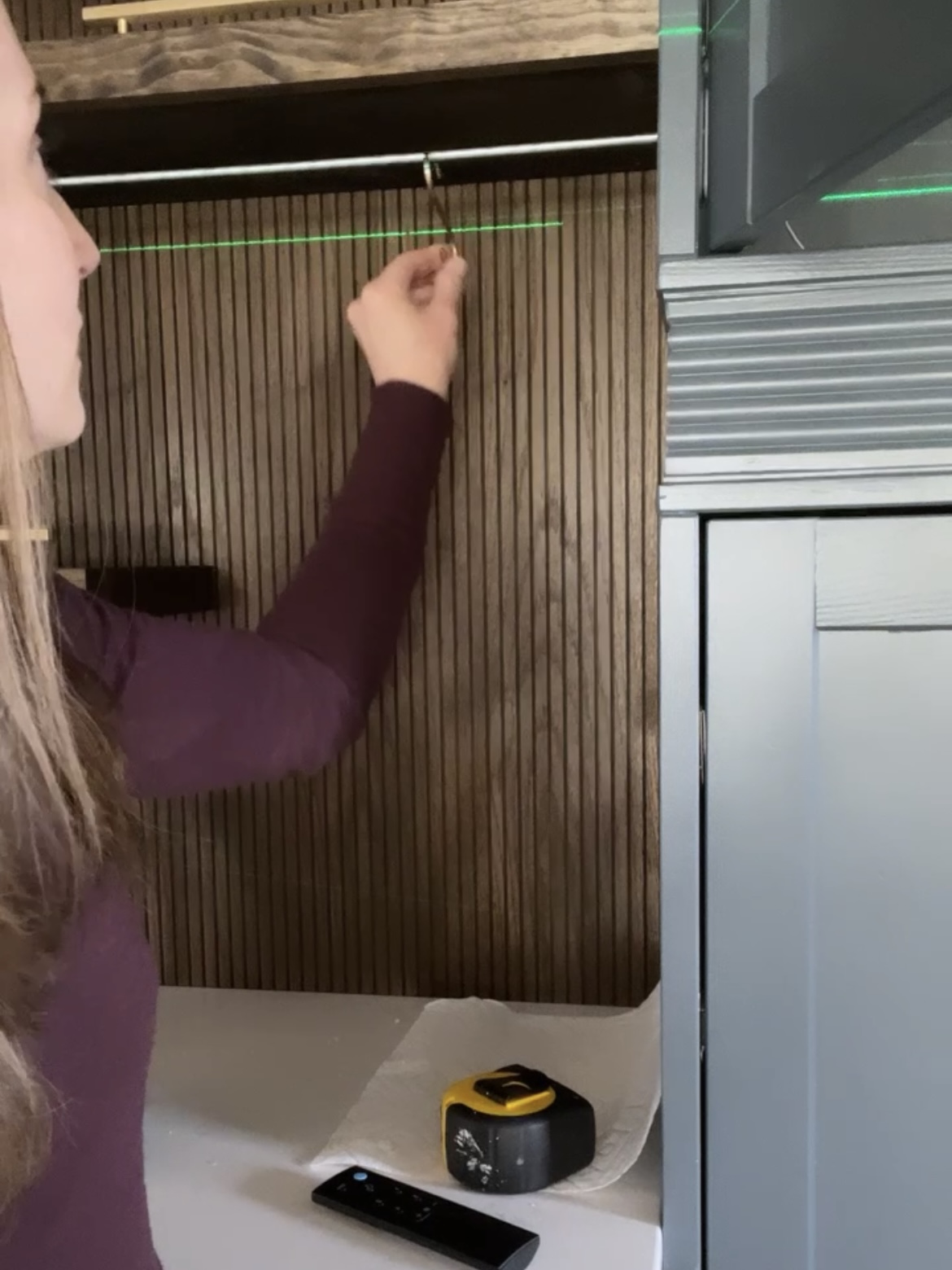
I also made holes in the inside of the cabinets for all the cords needed. You can see those and more in the blog post about the cabinet organization!
Coffee Nook built with IKEA Havsta Cabinets: Final Thoughts

Budget
As far as a budget project goes, this was probably the most affordable way of doing a cabinet wall like this. The cabinets ($1300), pole wrap ($100), countertop ($300), paint (~$70), additional lumber (~$100), and hardware ($130) all added up to approximately $2,000.
Alternative Cabinet Source
If I had a larger budget, I would have opted to work with Cabinet Joint. That’s the ready-to-assemble cabinet company I worked with for the dining room at our old house. The quality of their cabinets is awesome, and they do all of the difficult calculations. You can also get cabinetry made with custom dimensions which is huge, AND they’re still WAY more affordable than stock cabinets.
Using IKEA cabinets with set dimensions required a lot of extra planning and thought to get them to work in our specific space. I’m SO happy with how they turned out, but I always want to be transparent… Nothing is ever as easy as it looks in pictures and videos!
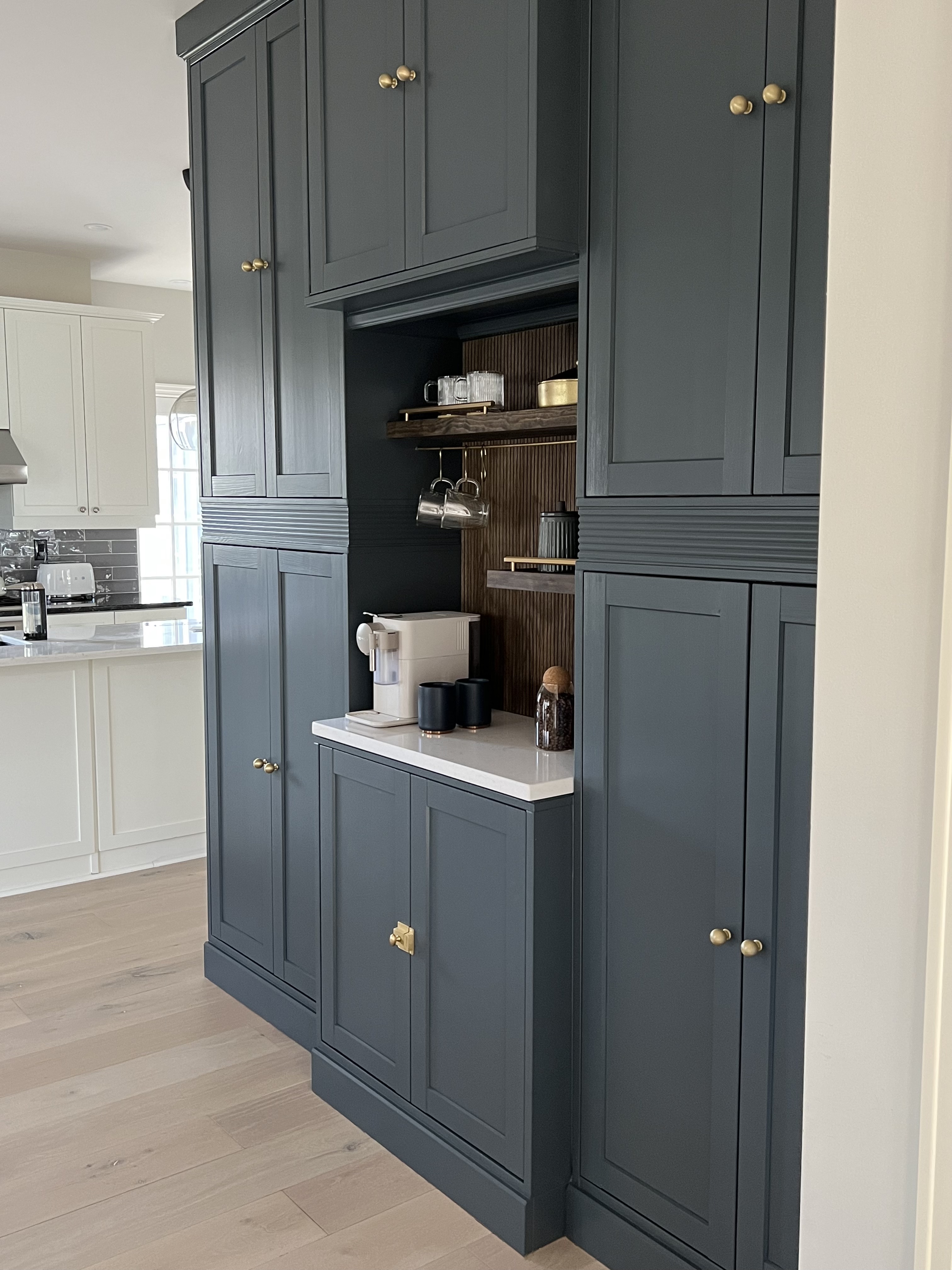
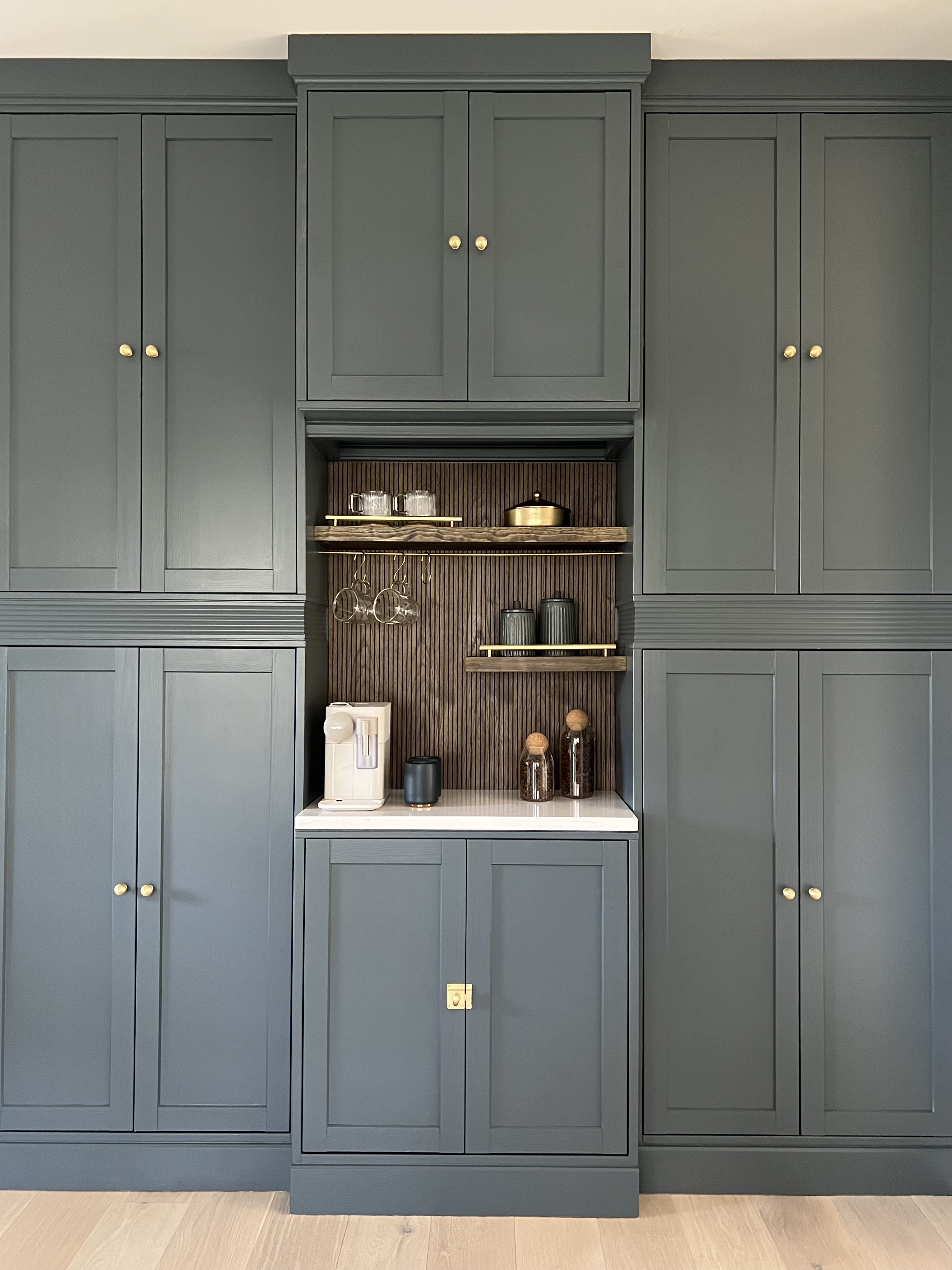
Links for Coffee Nook Accessories
Nespresso Espresso Machine
Coffee Bean Glass Jars
S-Hooks
Cabinet Knobs (I used the holes in the original cabinet)
Cabinet Latch (wood fill holes not covered by the latch)
Dark Grey Canisters
Glass Coffee Mugs
Fluted Glass Coffee Mugs
Gold Canister
Dark Blue Coffee Mugs

Into the Coffee Nook Vibe? Here are more projects you may love!
Organizing Our IKEA Havsta Cabinets
Modern Office Space Makeover with Fluted Walls and a Massive Desk
Desk Flip and Office Organization
IKEA Bar Cabinet Hack and a Holiday Cocktail Party
Post may contain affiliate links, please see disclosure, linked here.
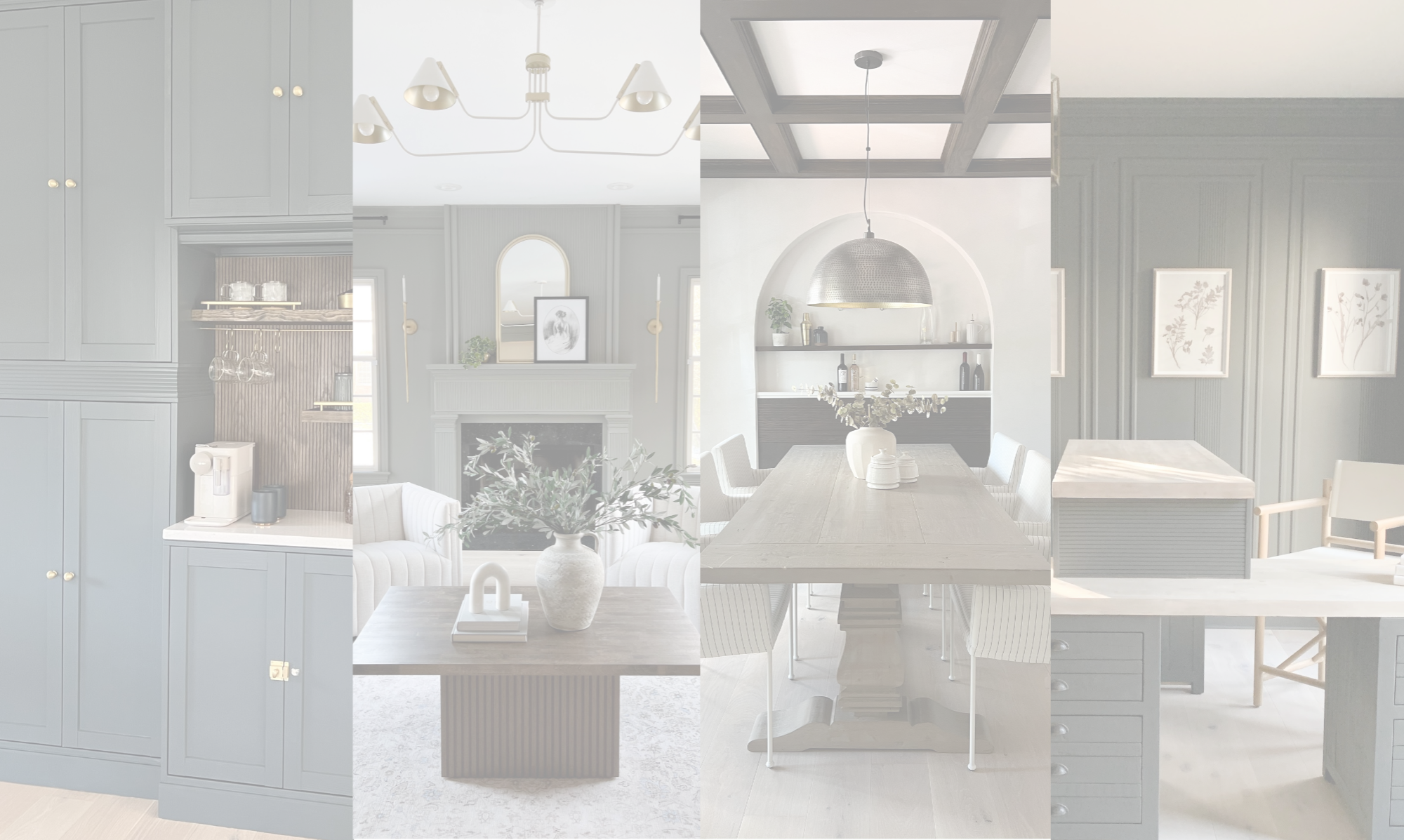
Wow, this is beautiful and so functional! Thank you so much for the explanation in this blog post!
Thank you so much for taking the time to read it and for such a nice comment!
Wow!!!! This looks so dreamy! Definitely will be trying this in a space in our home. Thank you for the detailed instructions. Great work!
Thanks so awesome to hear! Thank you so much for taking the time to leave such a nice message!
So glad I came across this blog post.. it’s giving me a lot more confidence for my upcoming ikea built ins hack..!!! You’ve done an amazing job here. Thanks for sharing!
That’s the nicest thing to hear! This totally made my day, thank you so much!
Impressive Ikea cabinet upgrade (although it’s far beyond just an upgrade!). The details you added really make this a custom piece. Thanks for sharing.
This is the nicest comment, thank you so much for making my day! It was a really fun one, especially because I was finally able to put away some of the clutter around here haha
Hi !! Love this. I was just wondering, when you colour matched Coffee Nook at Benjamin Moore, what colour or number did it end up being? Reason I ask is that we have no I don’t think we have Magnolia paint here in Canada.
Hi! Thank you so much! That’s such a great question… I no longer have the paint can, but next time I go to my Ace Hardware store, I will see if there’s a number associated! If I’m remembering correctly, I don’t think they could find any number in their system. They just used something to match to the color chip, but I can see if they kept the “recipe” for it!